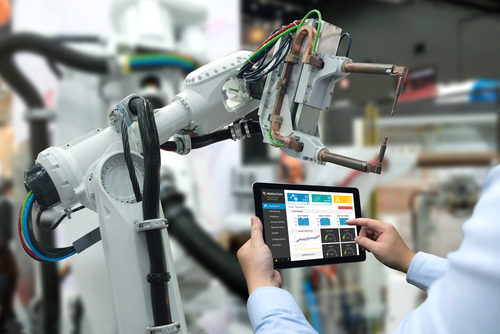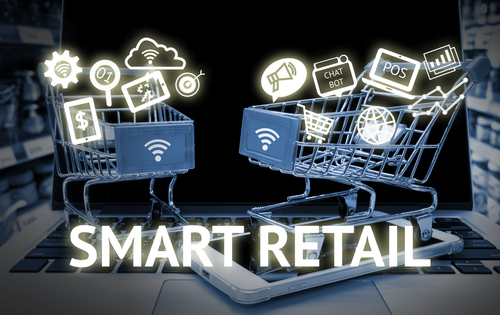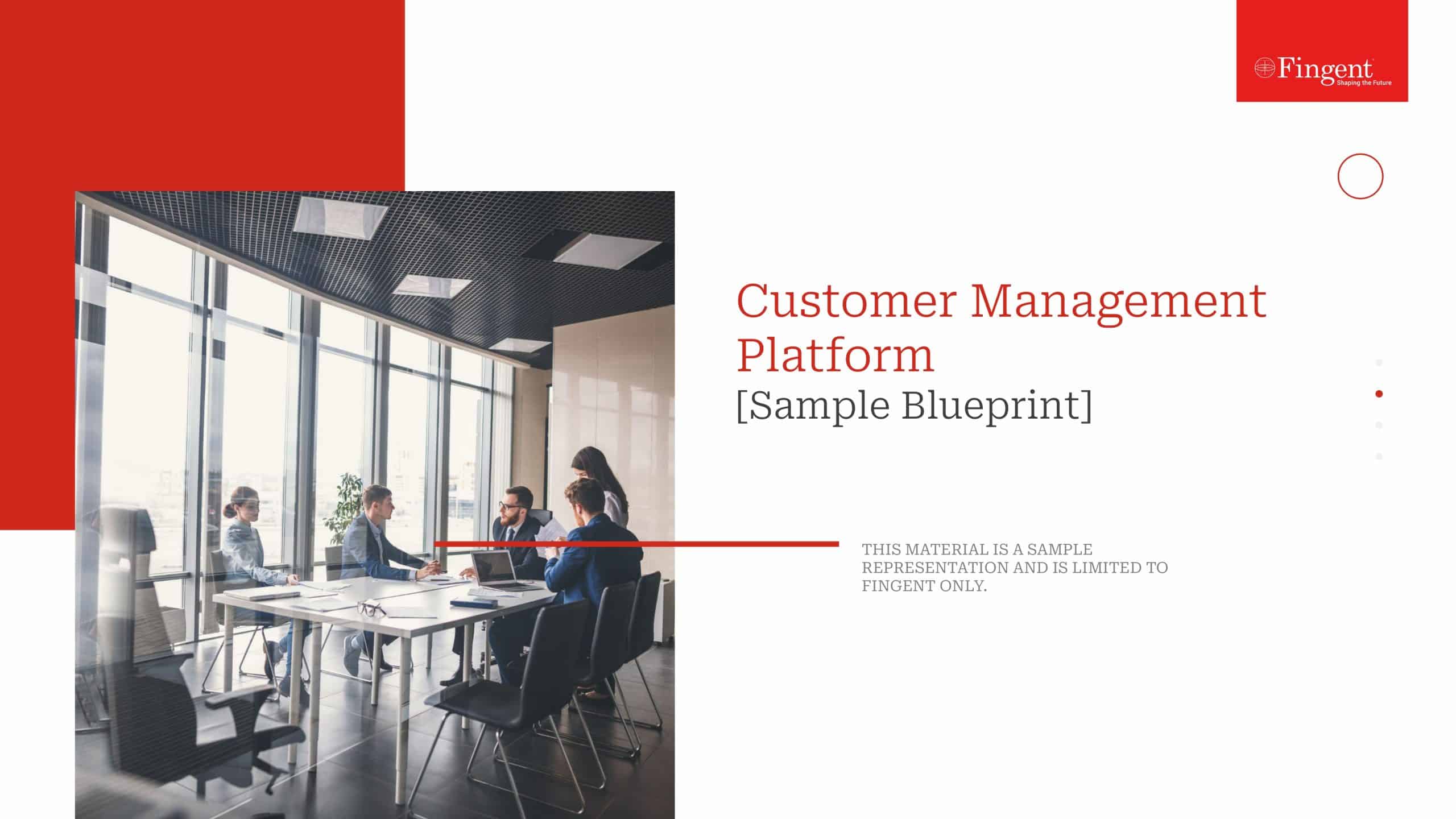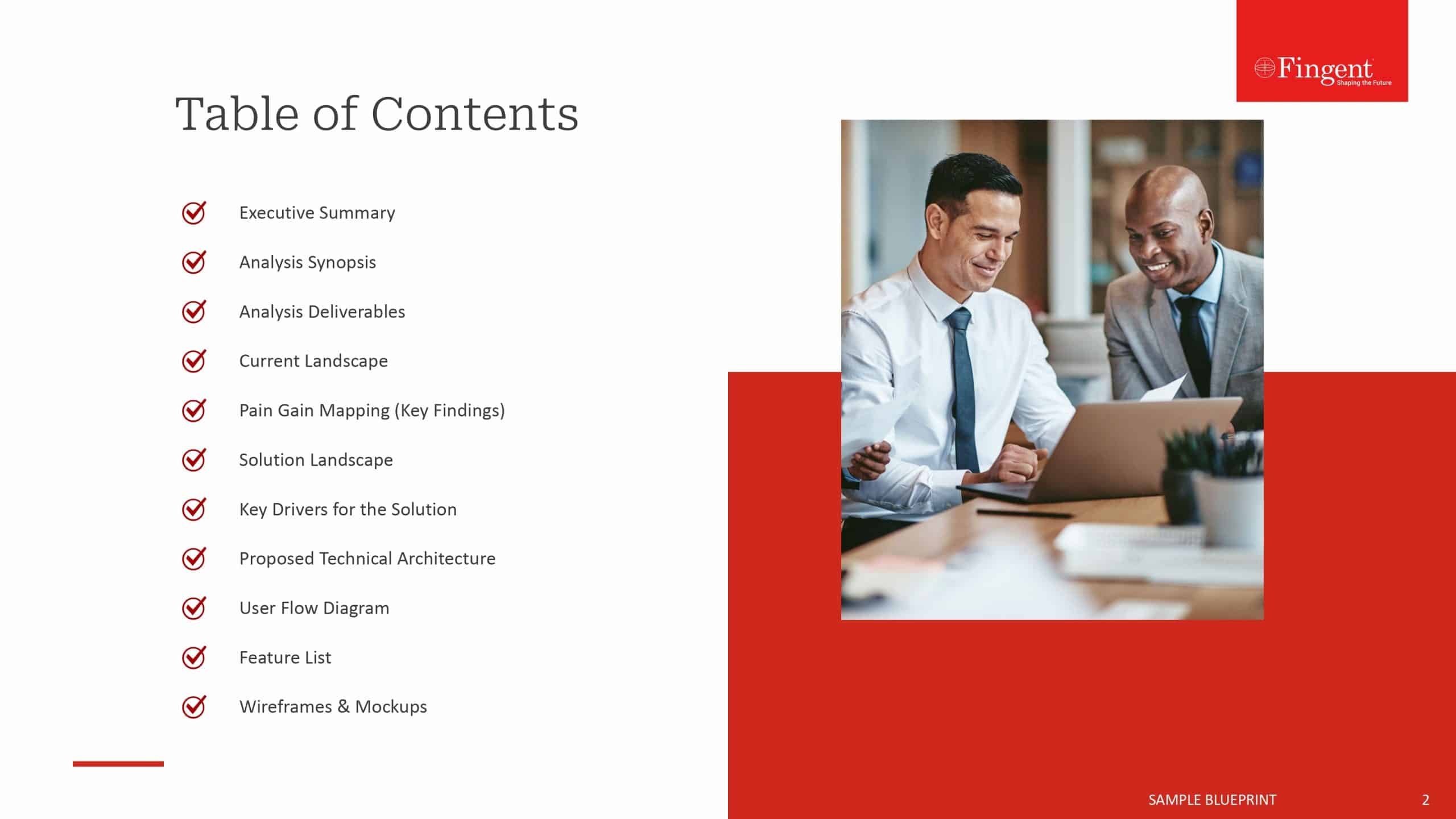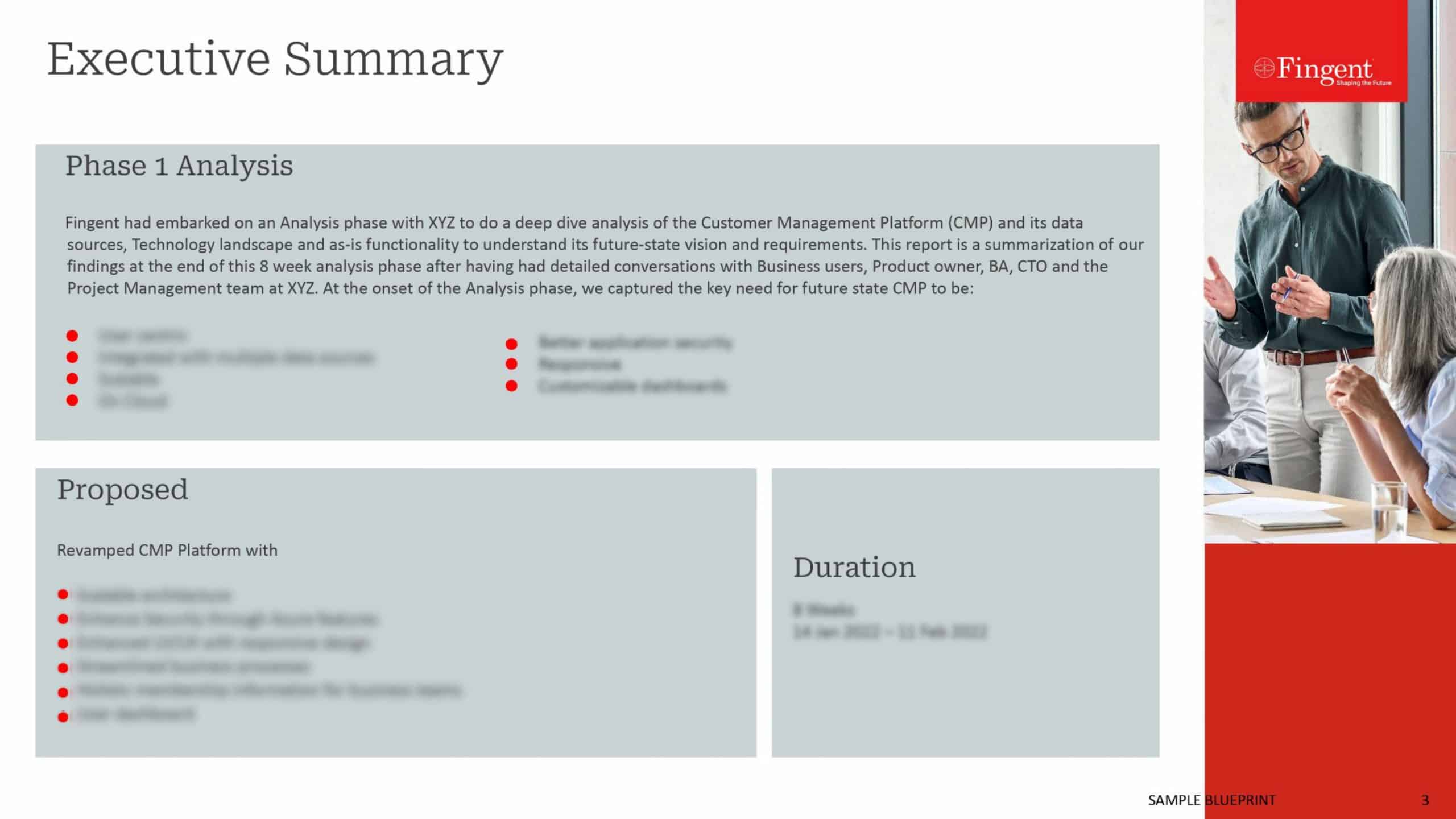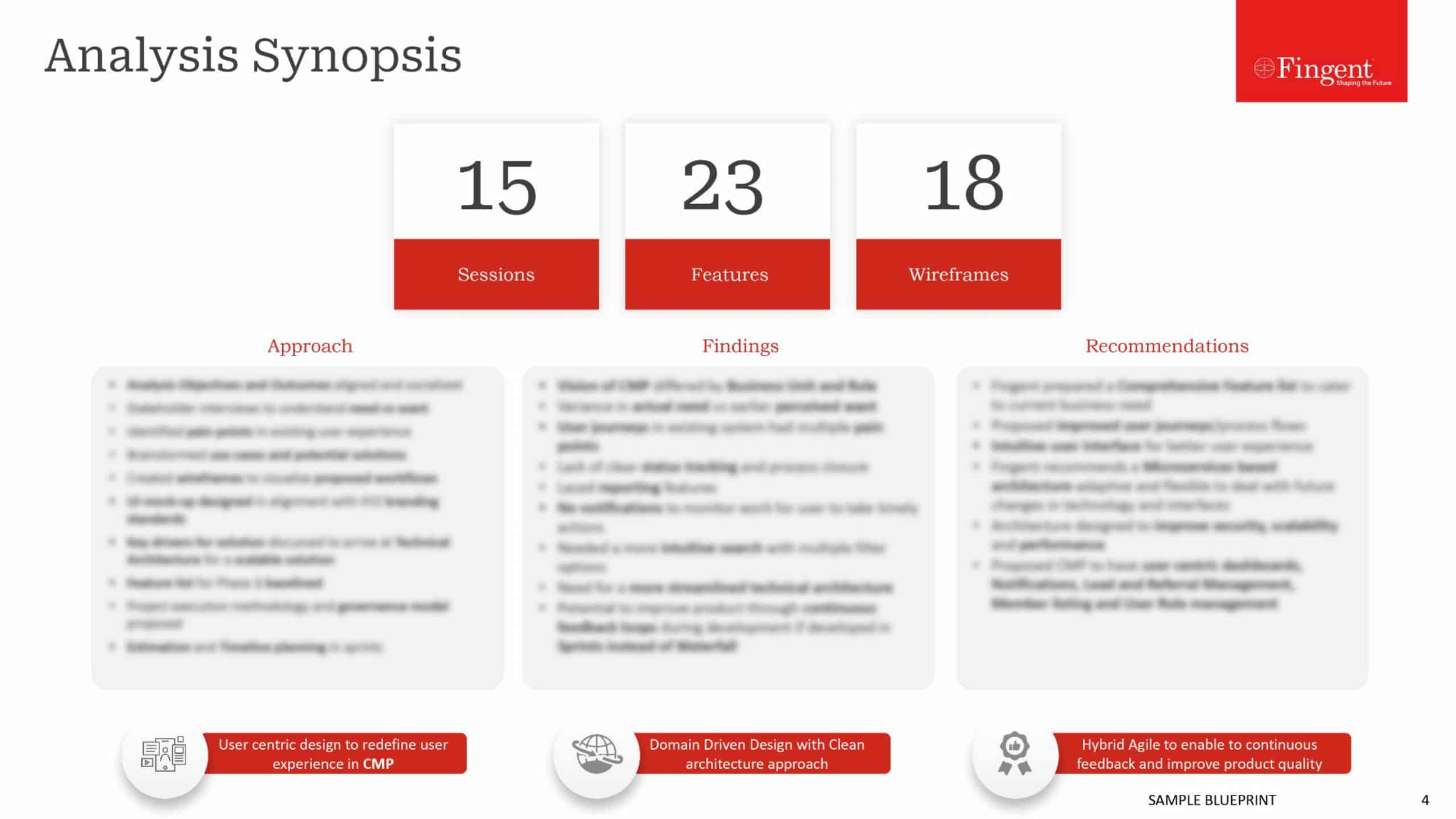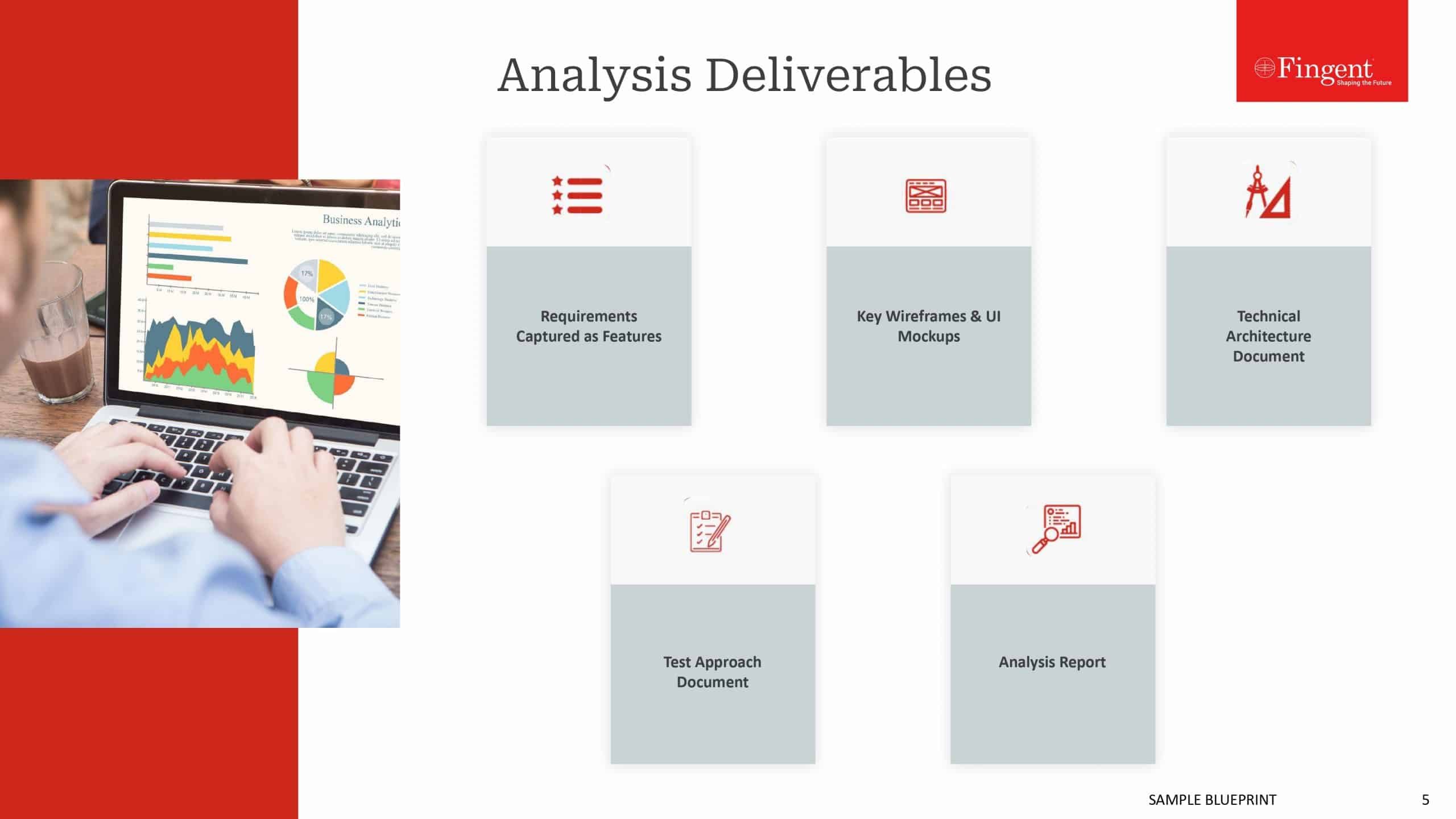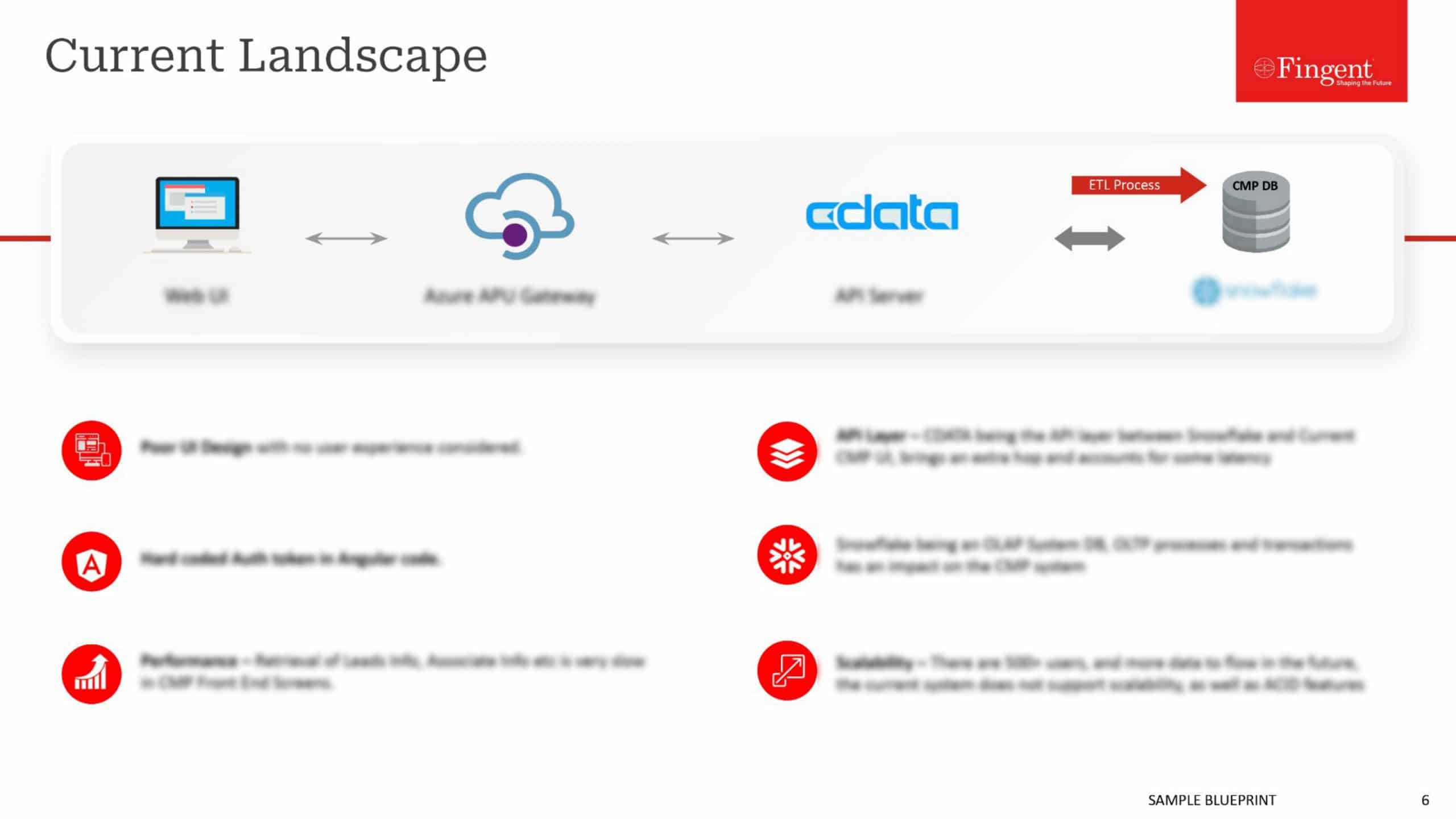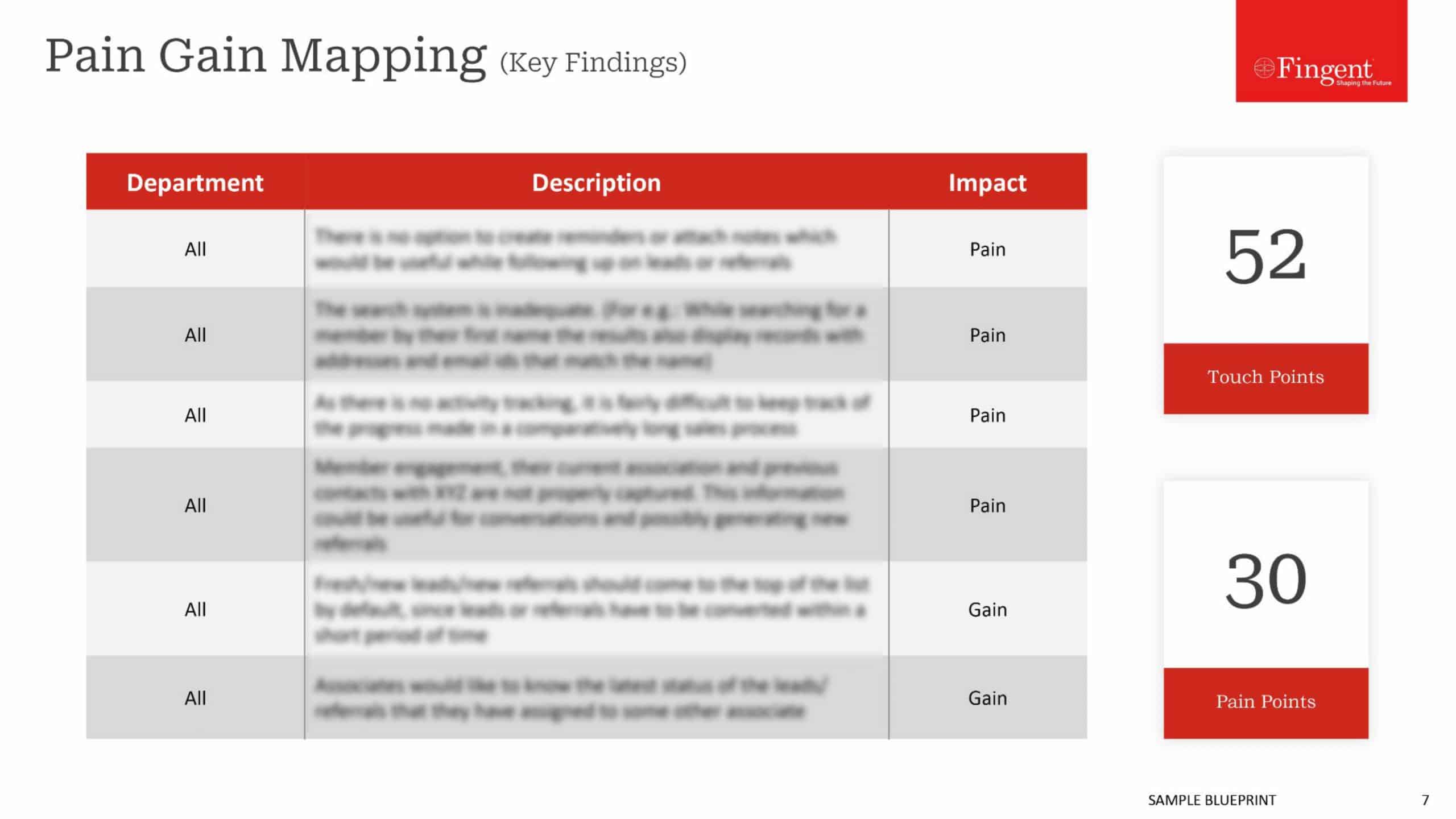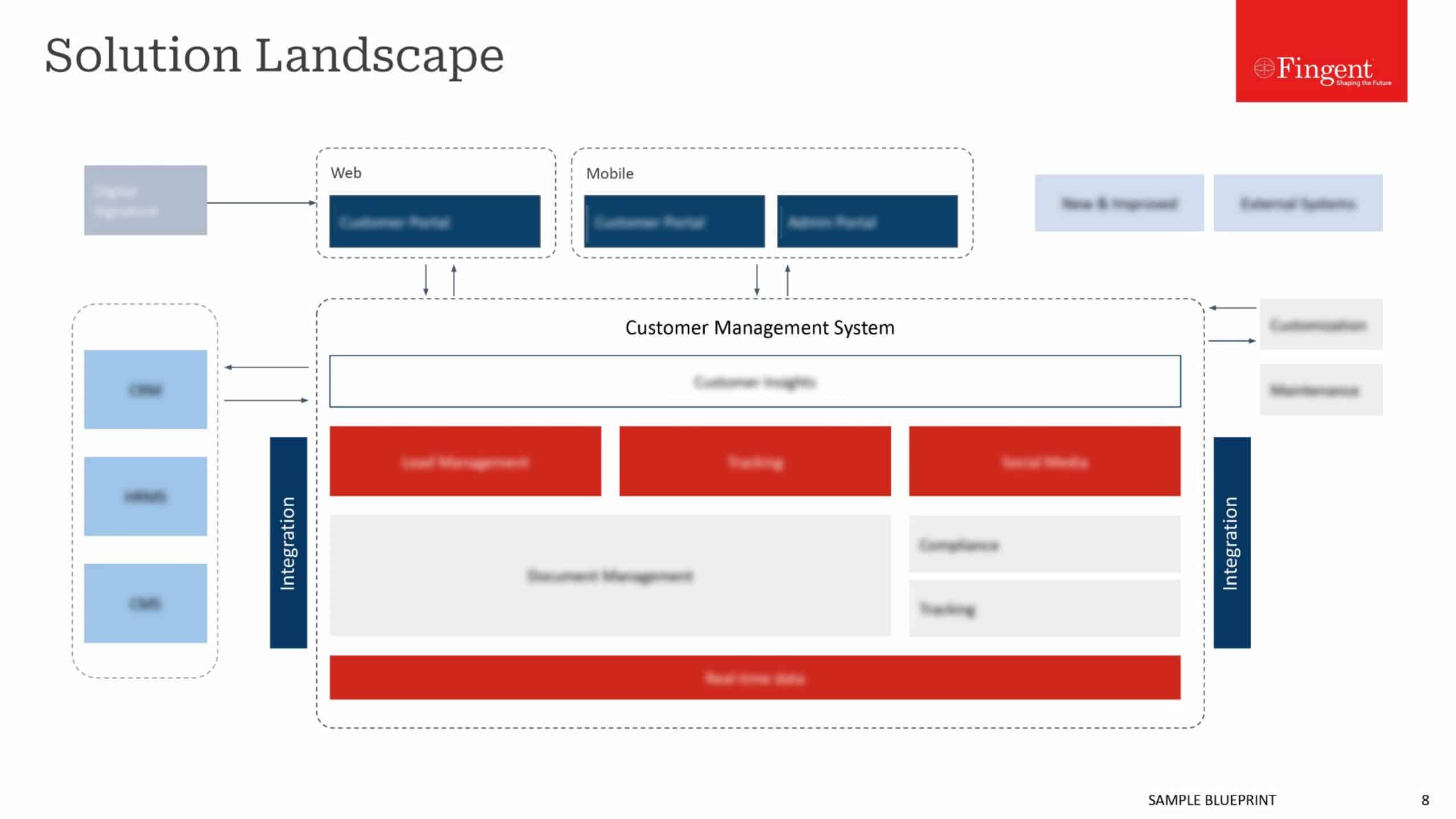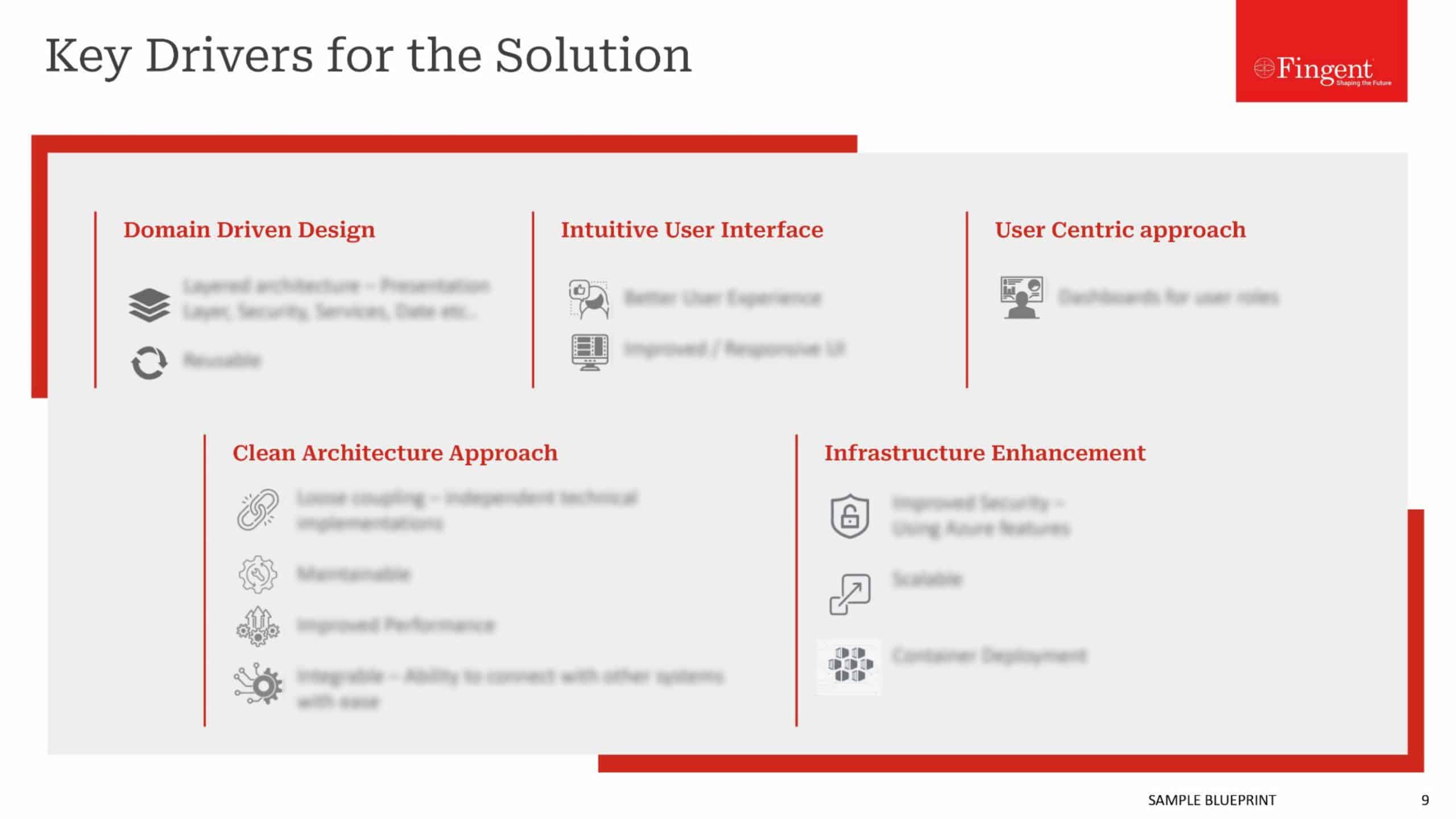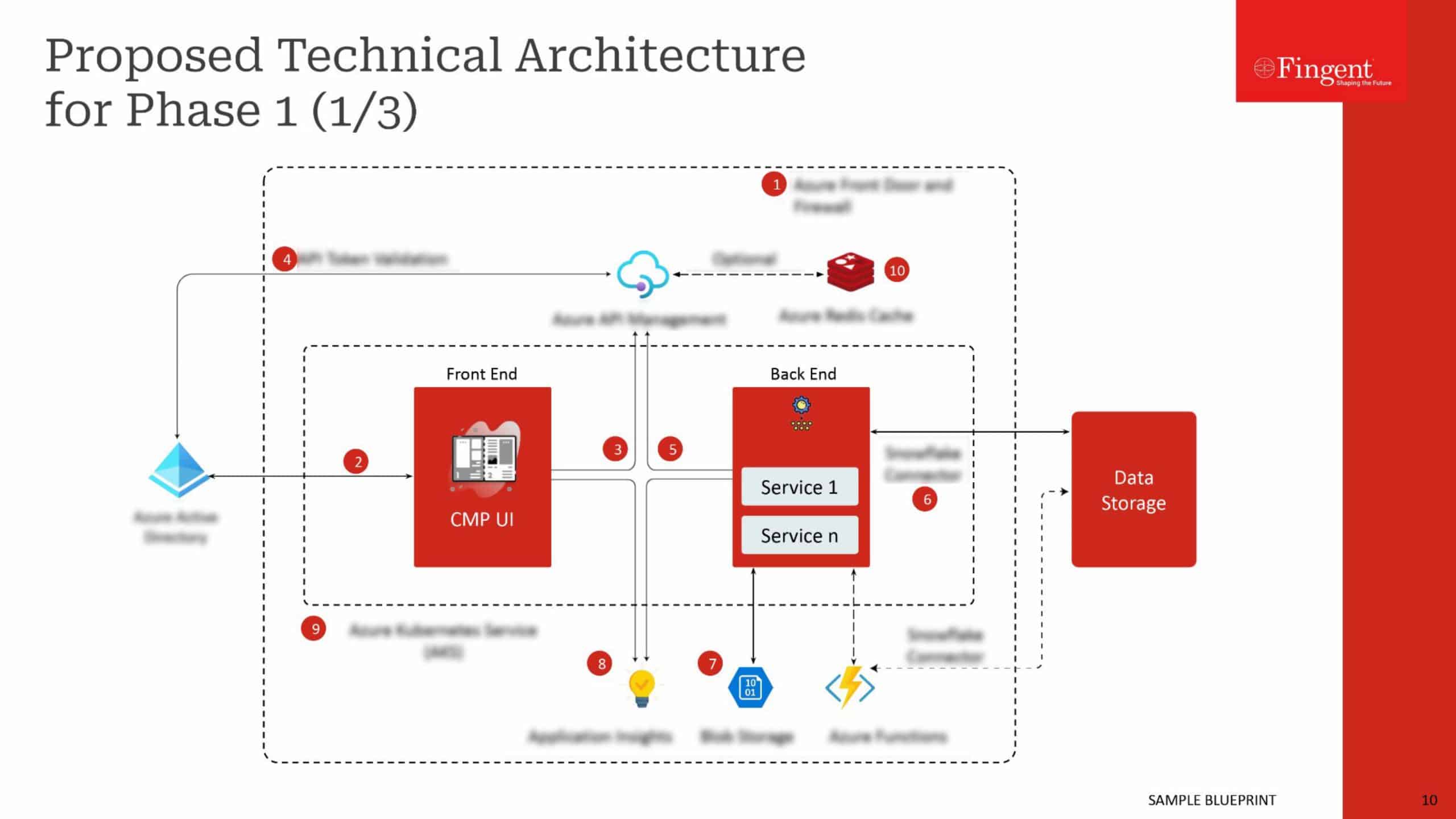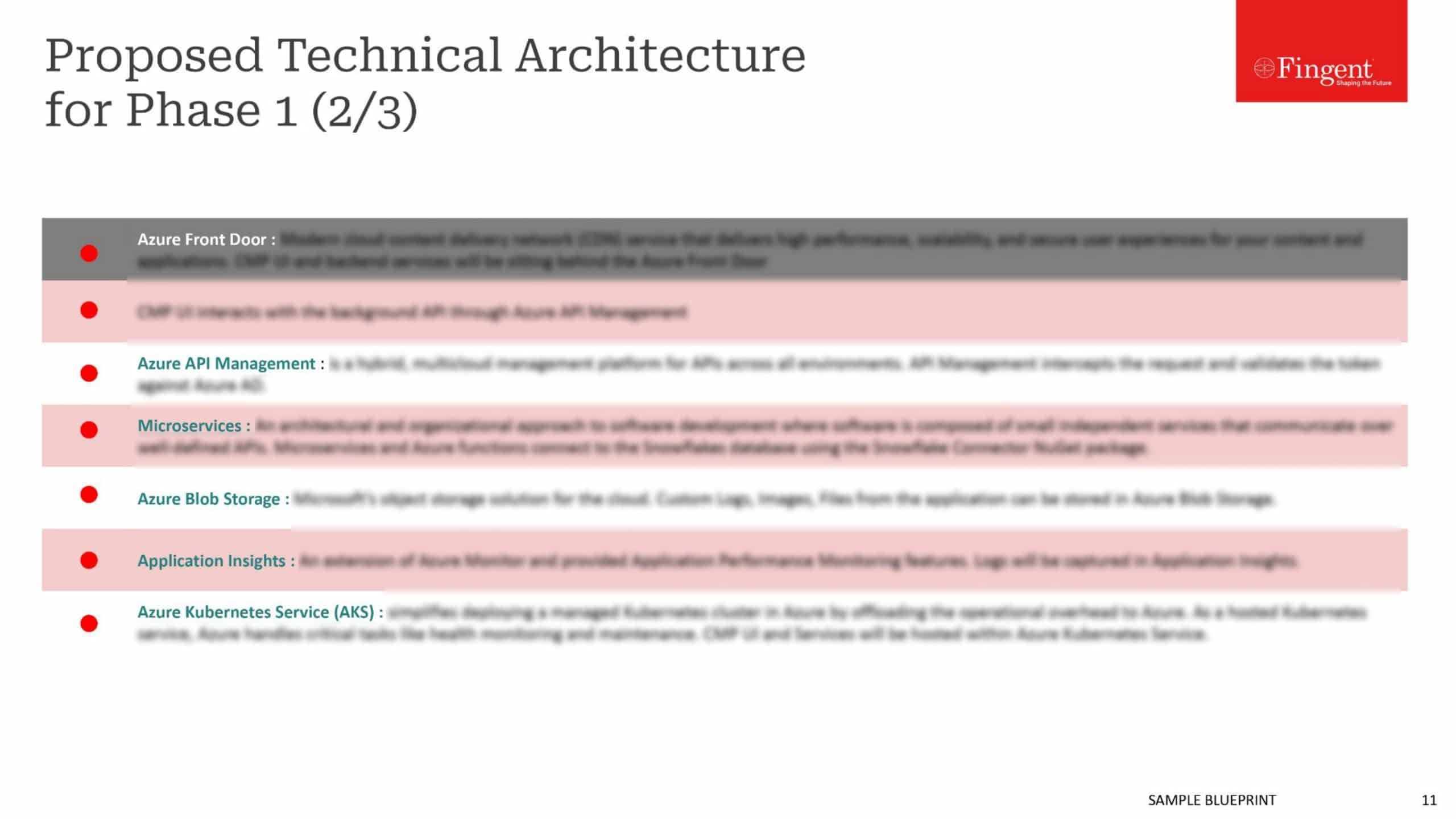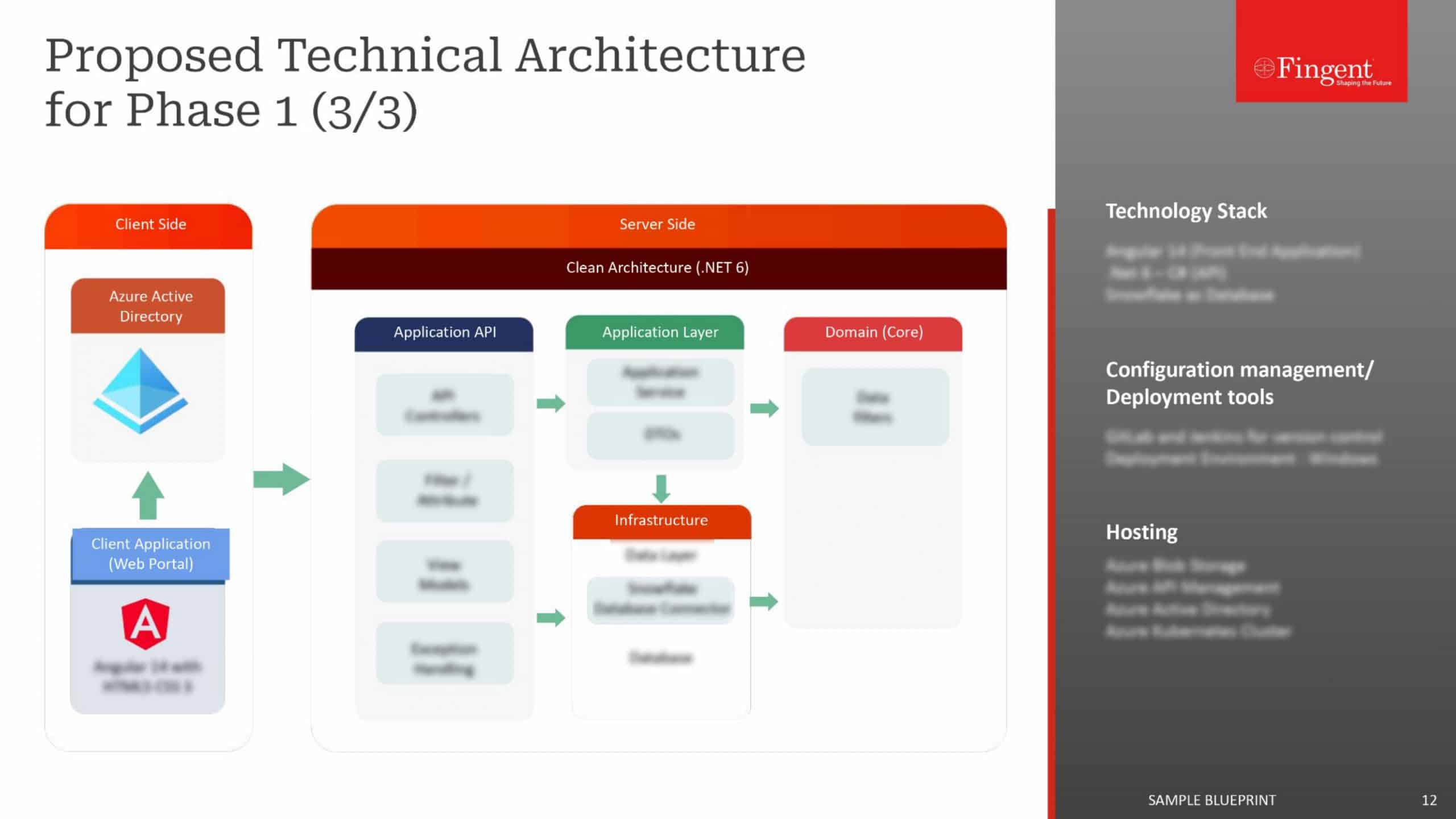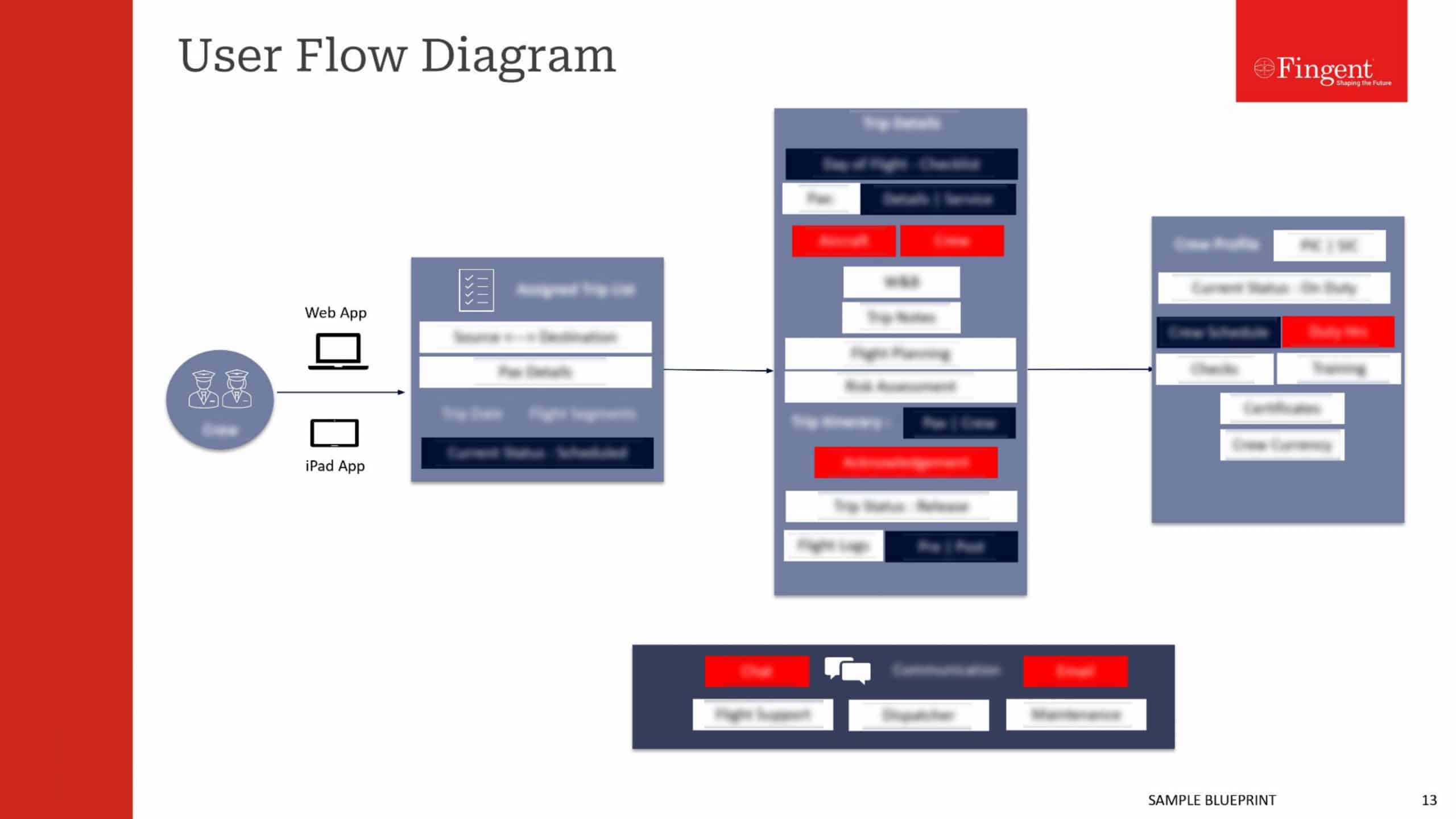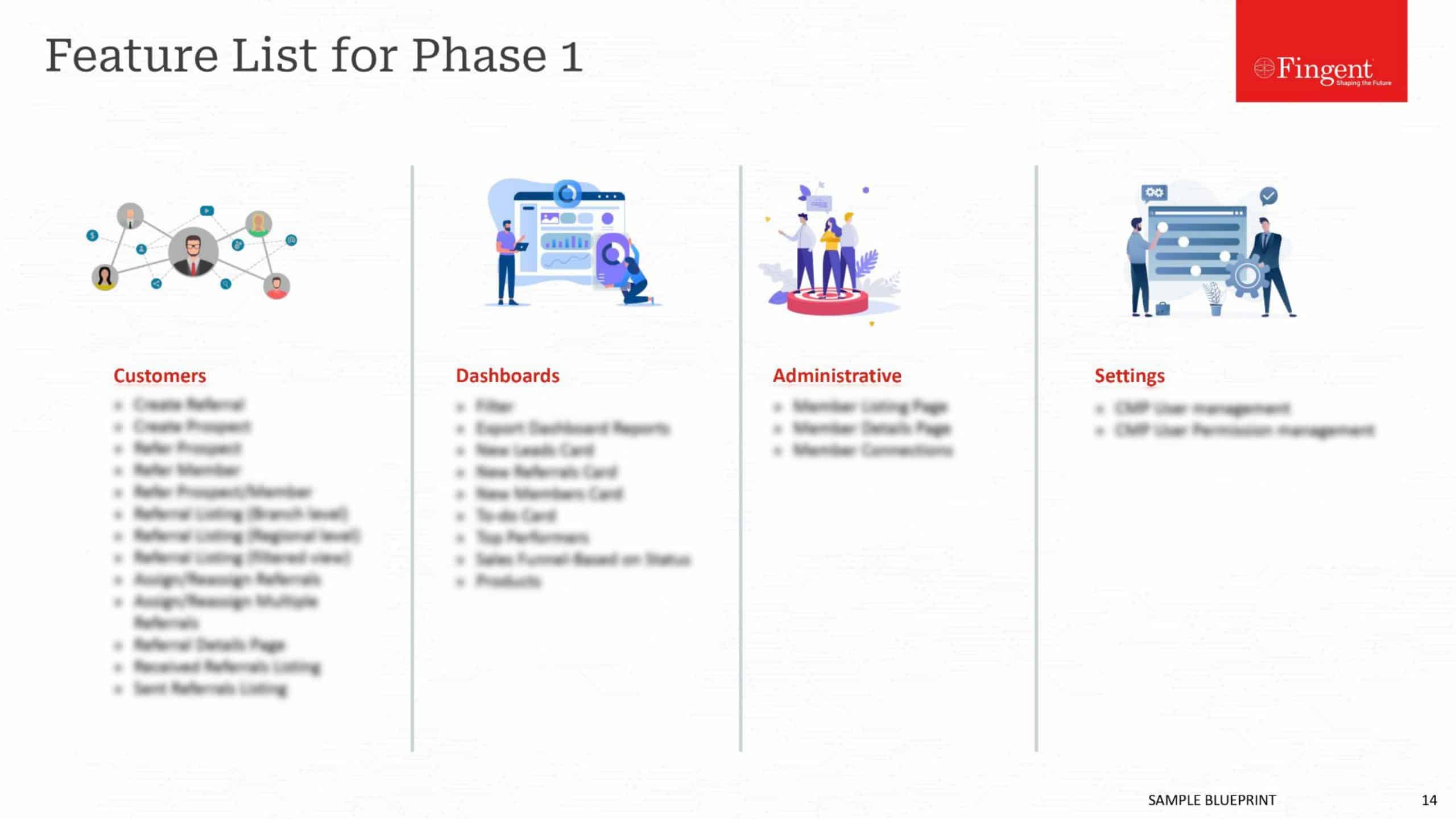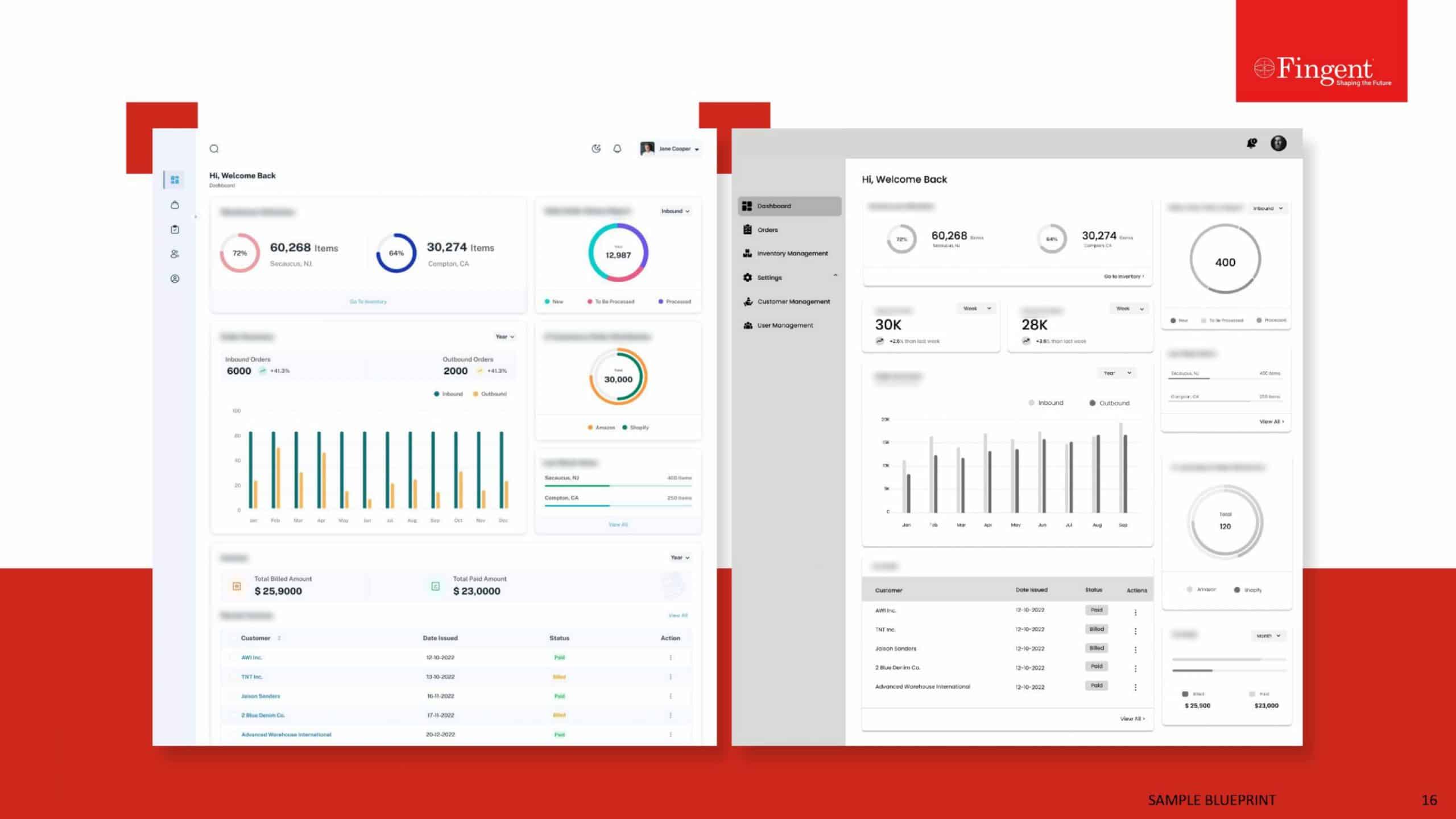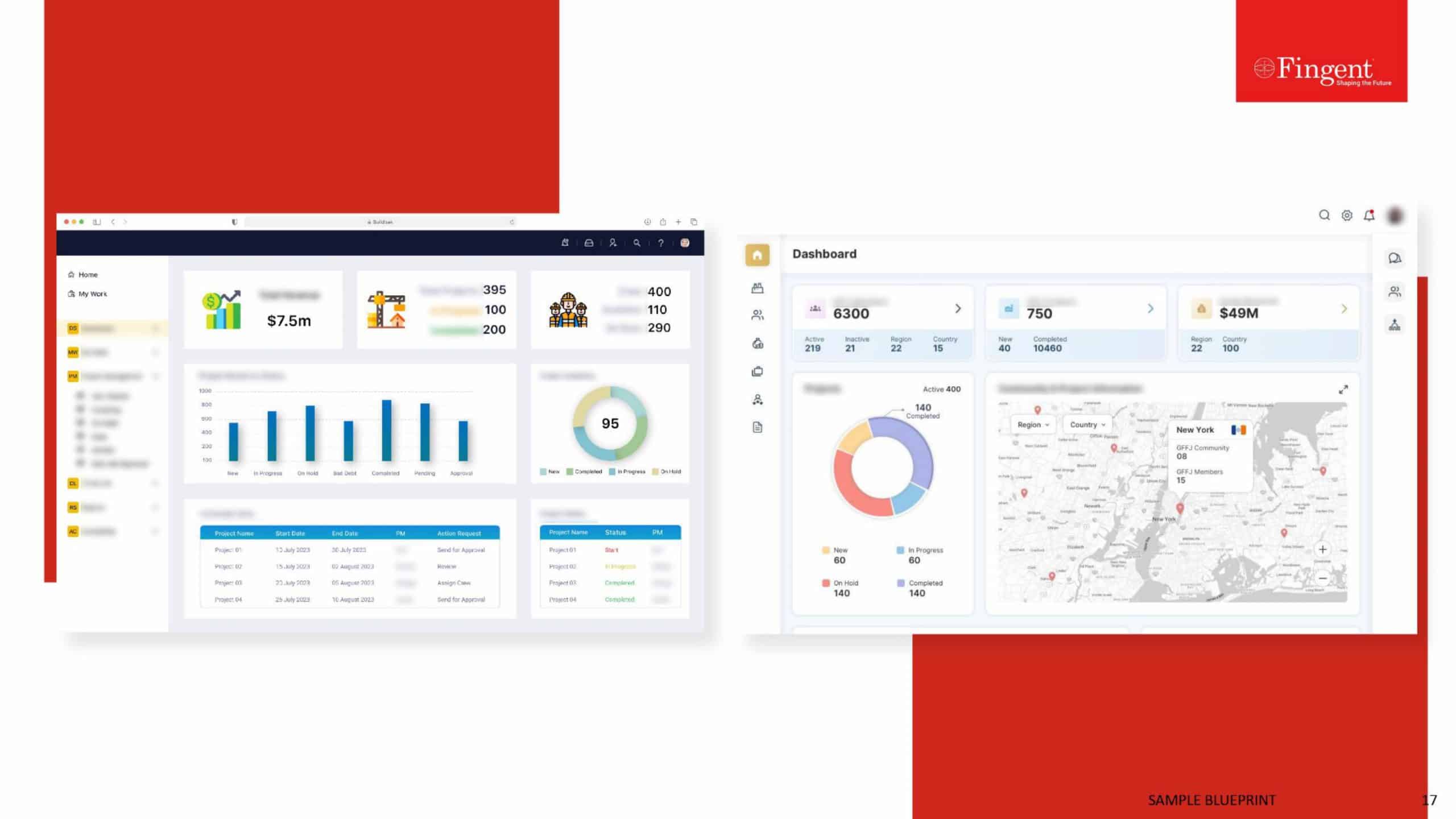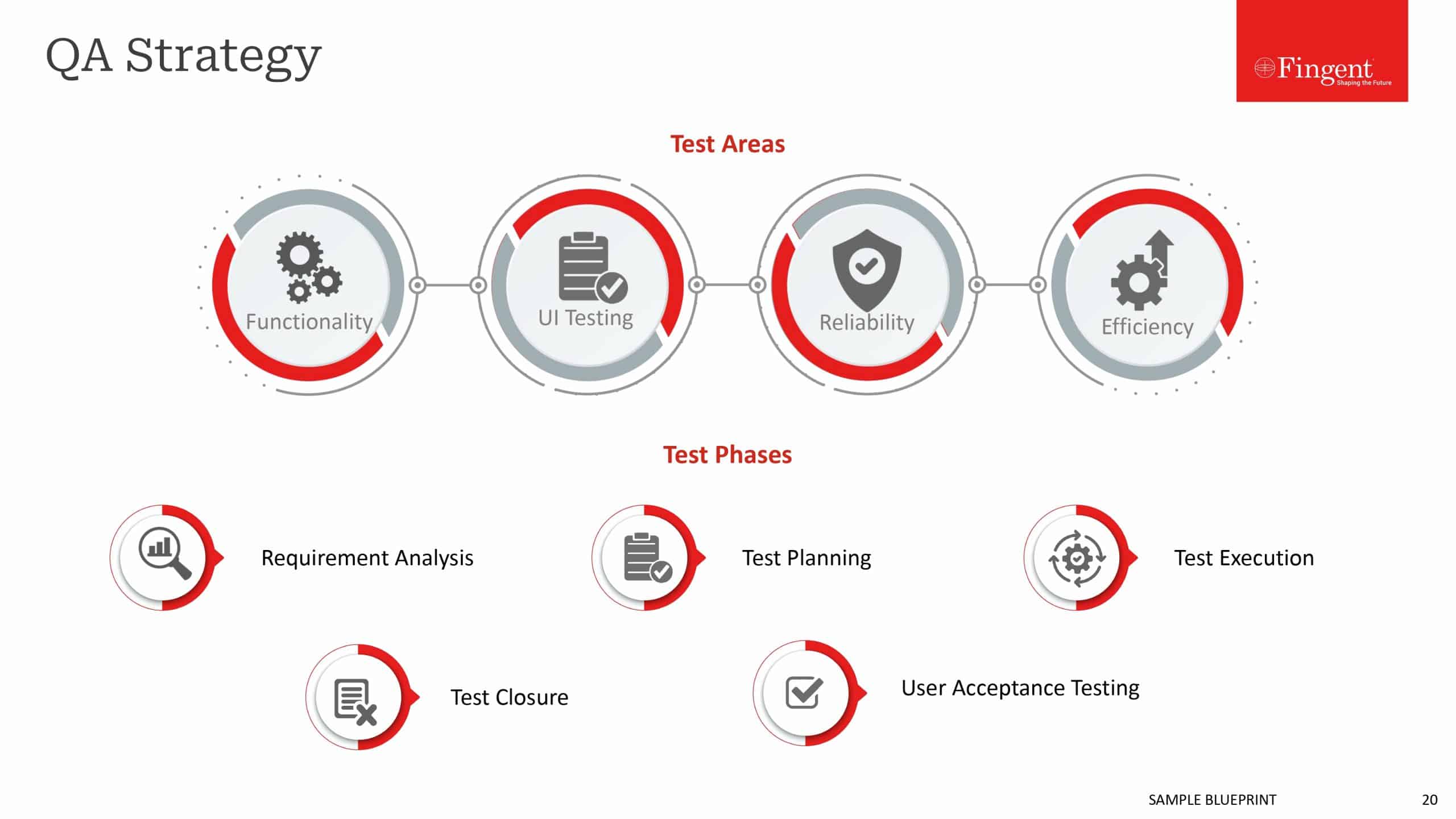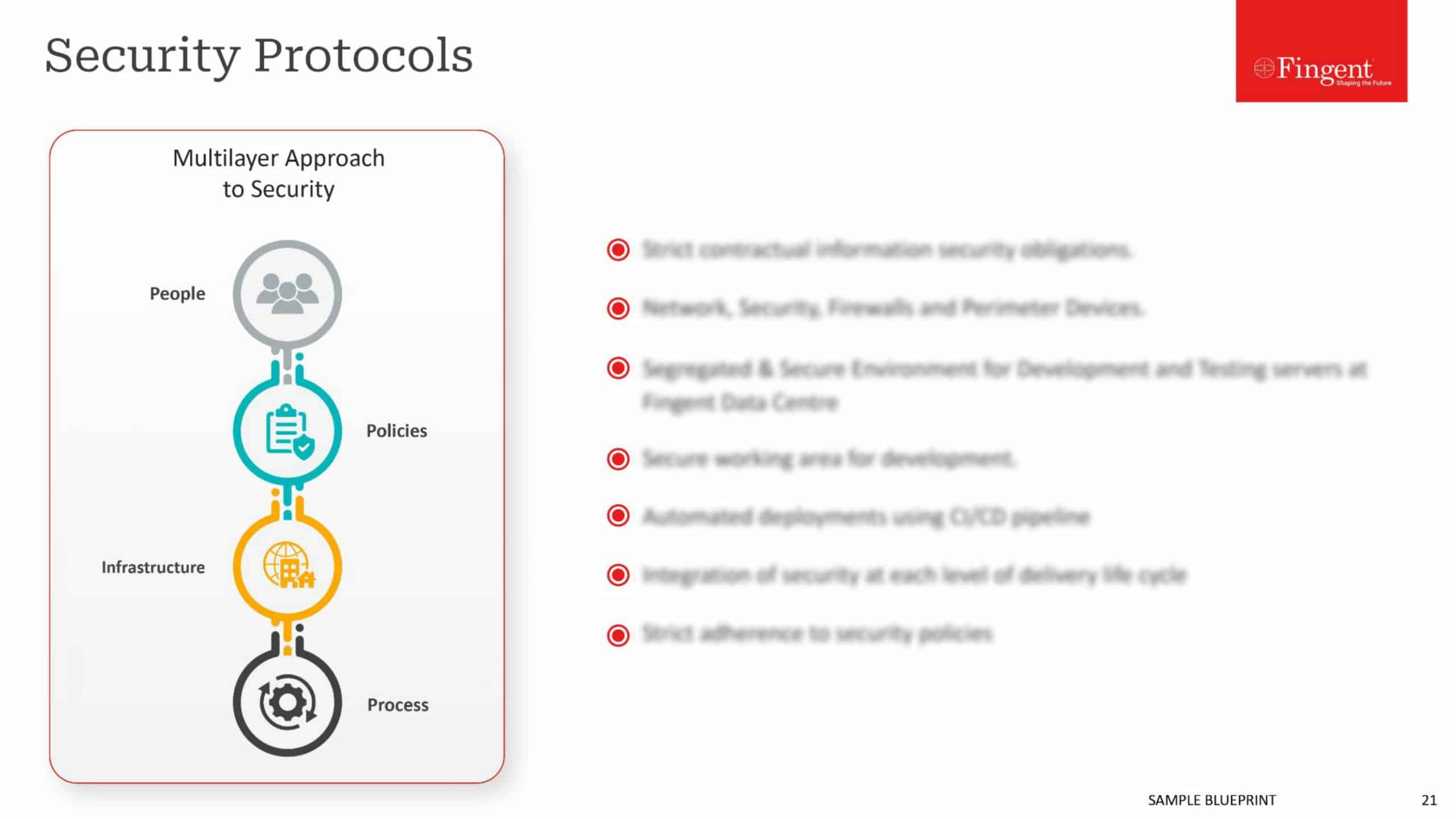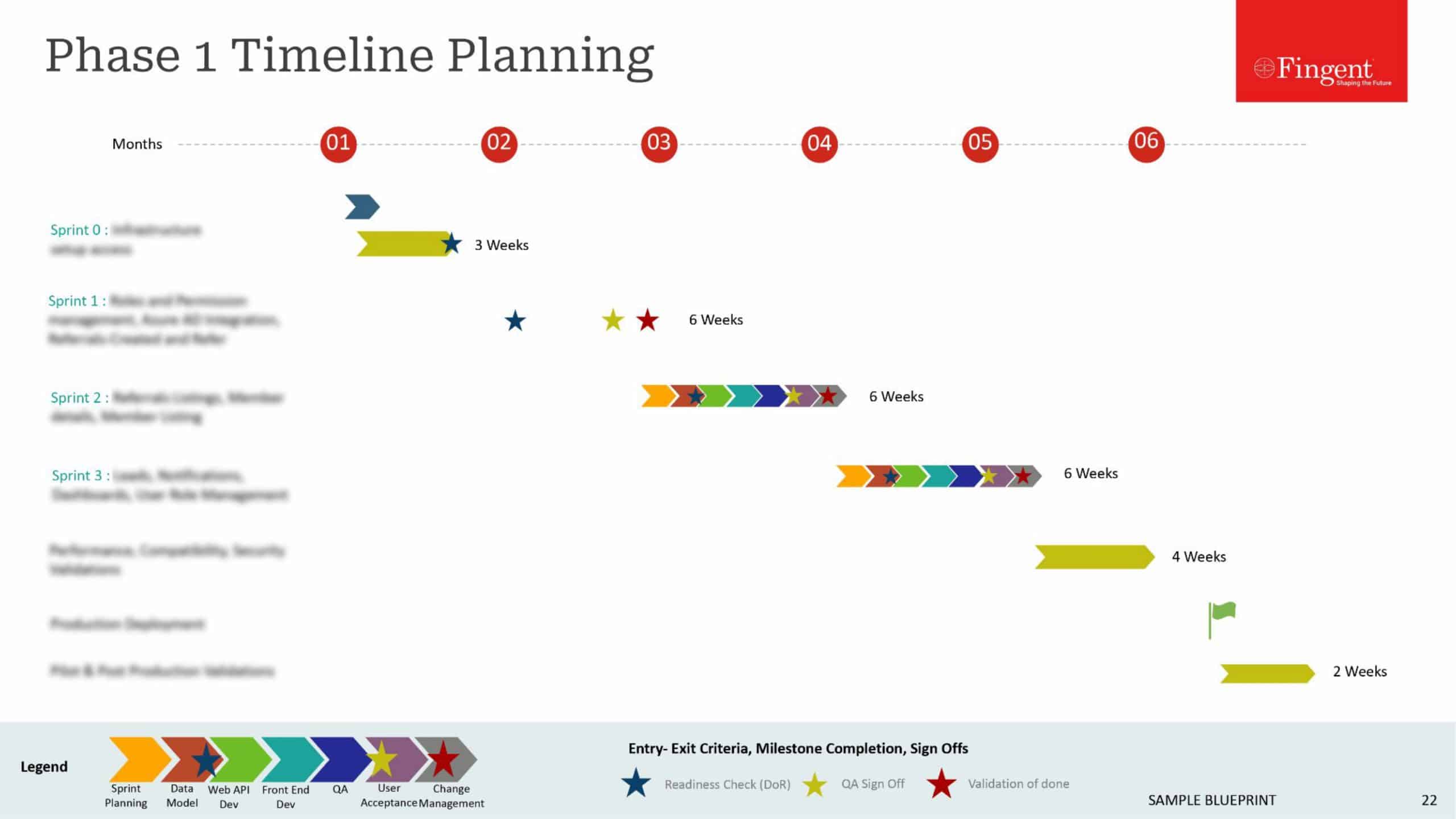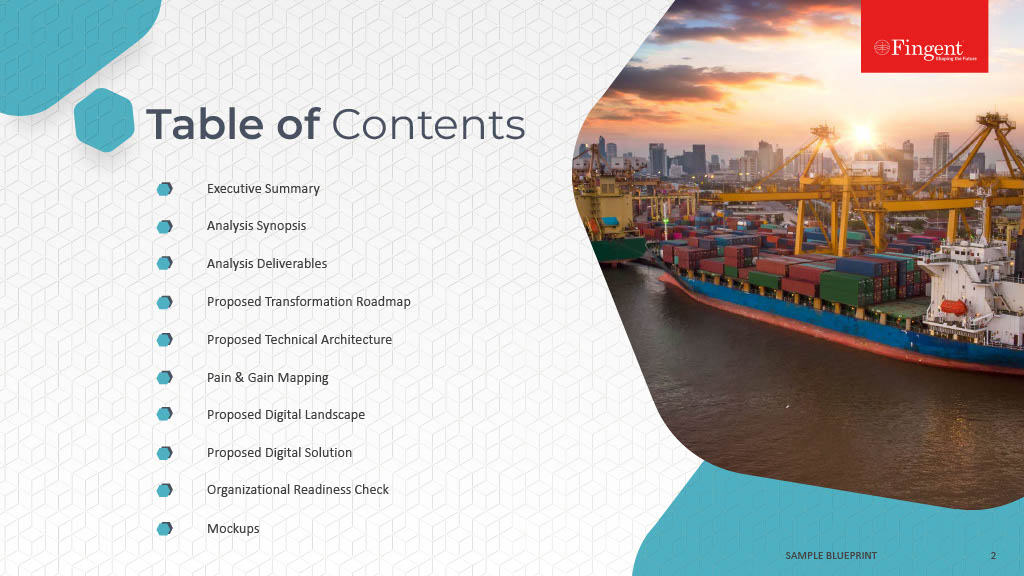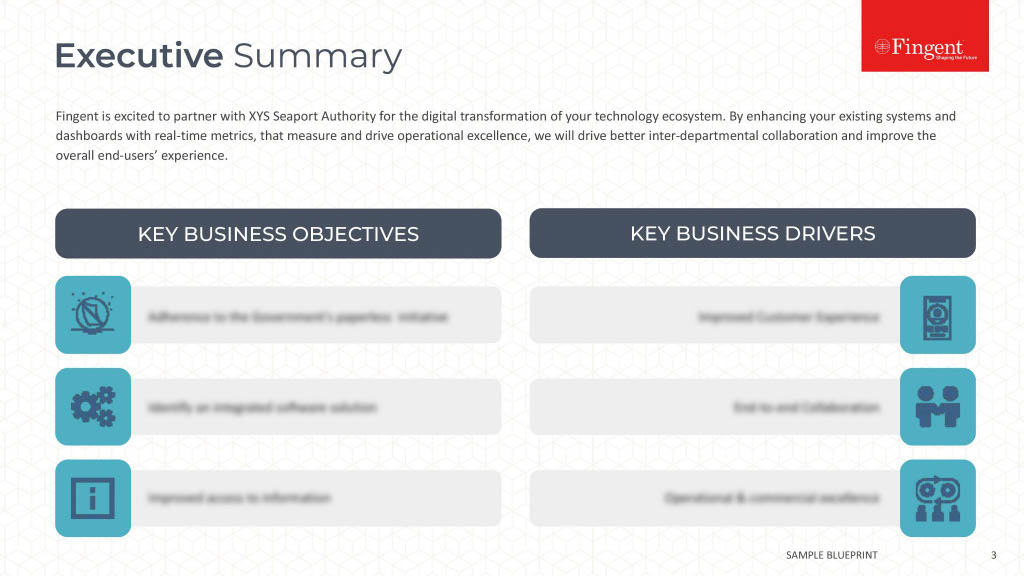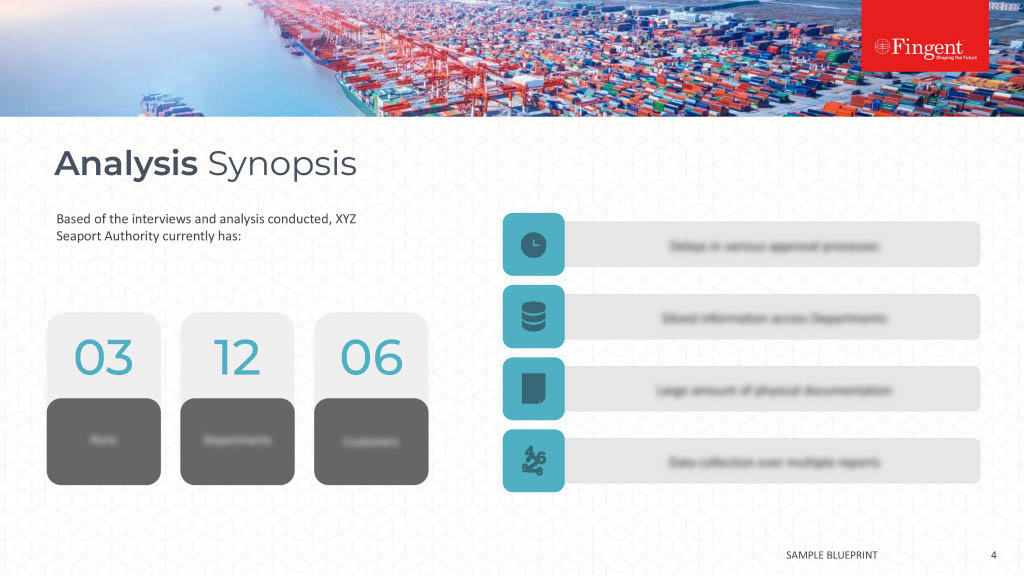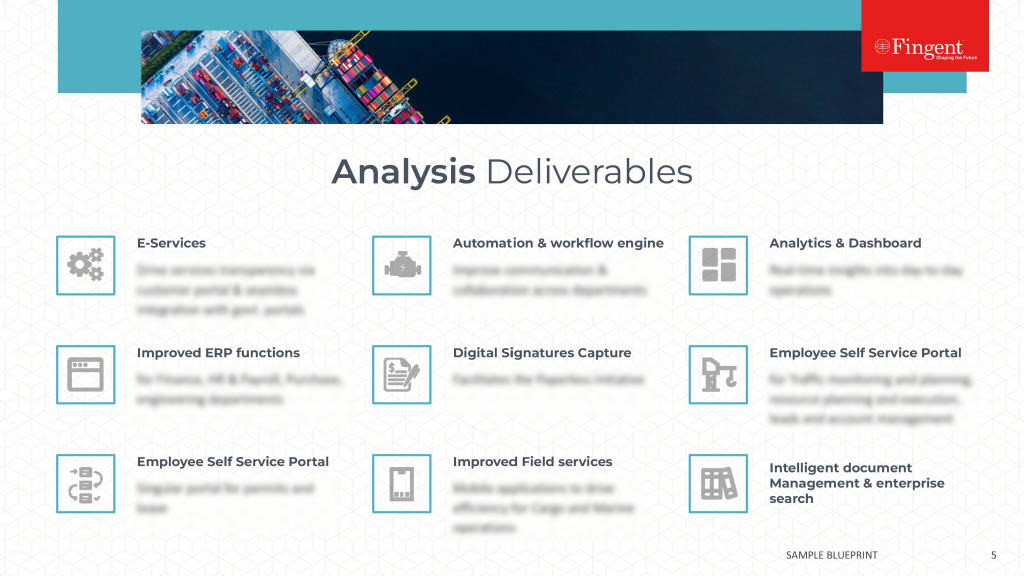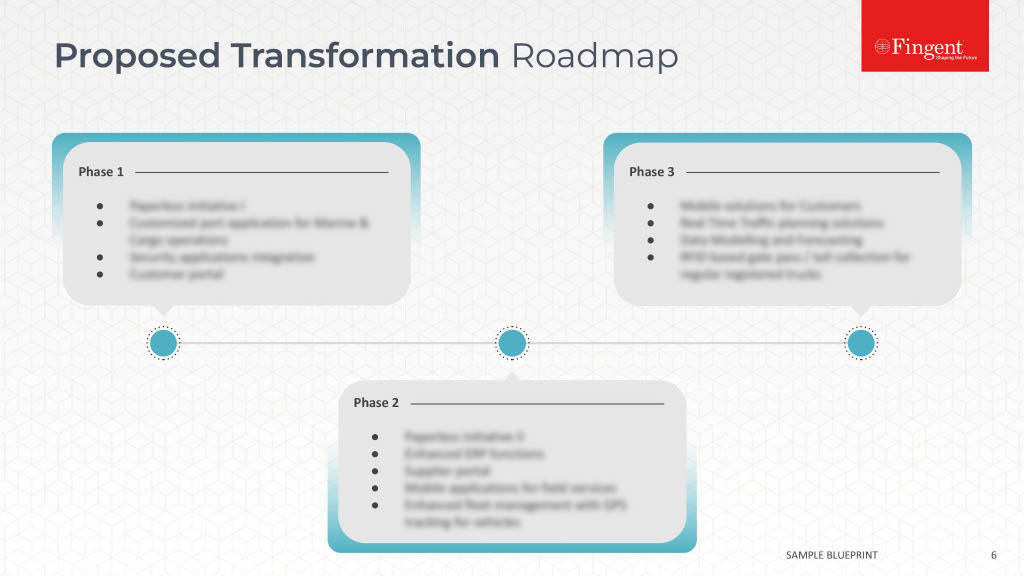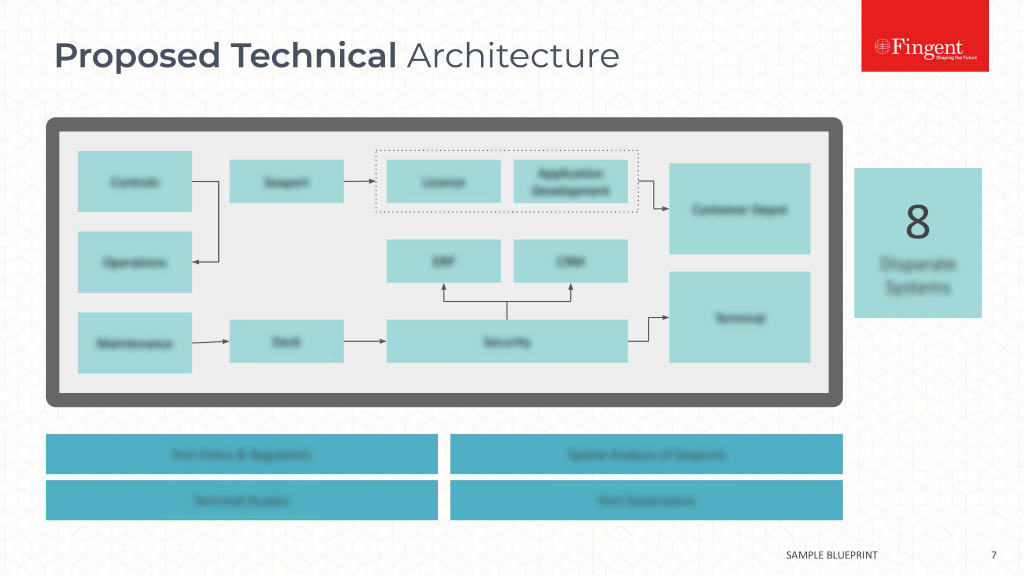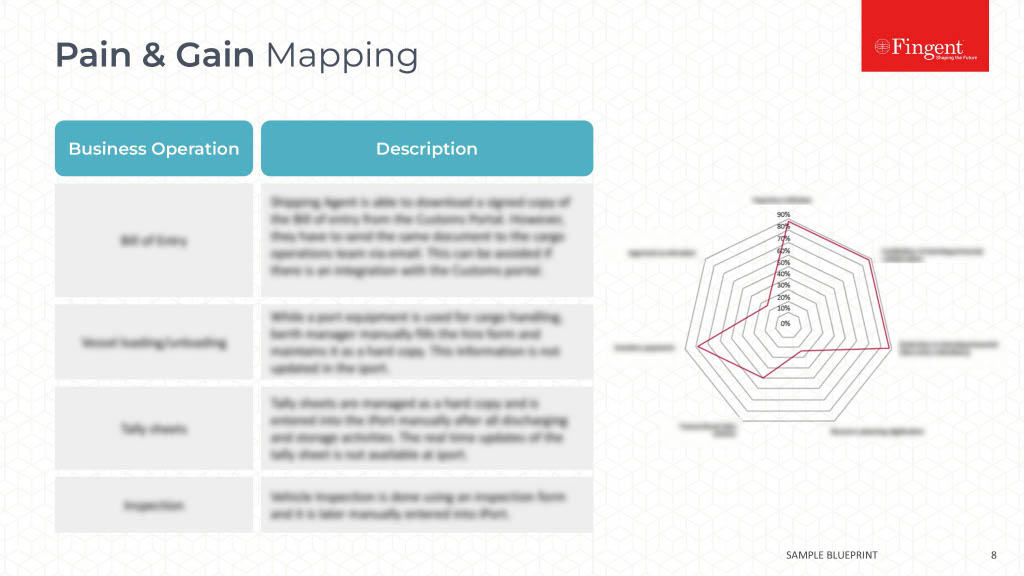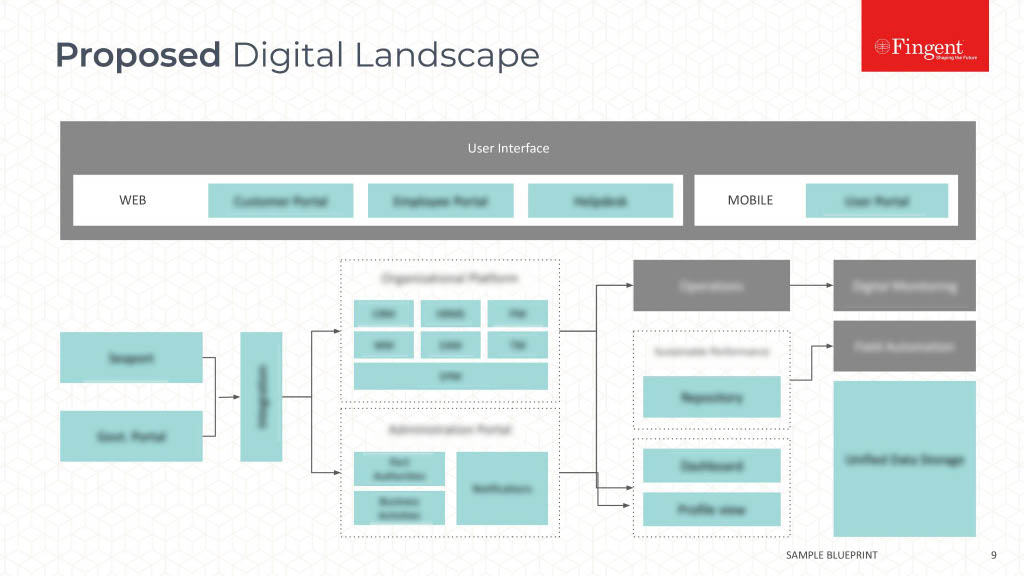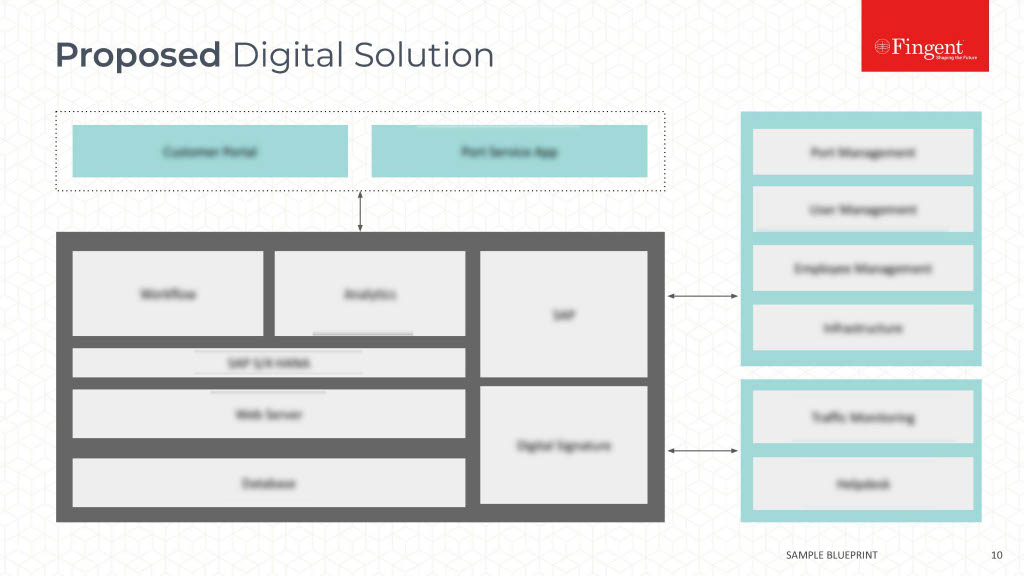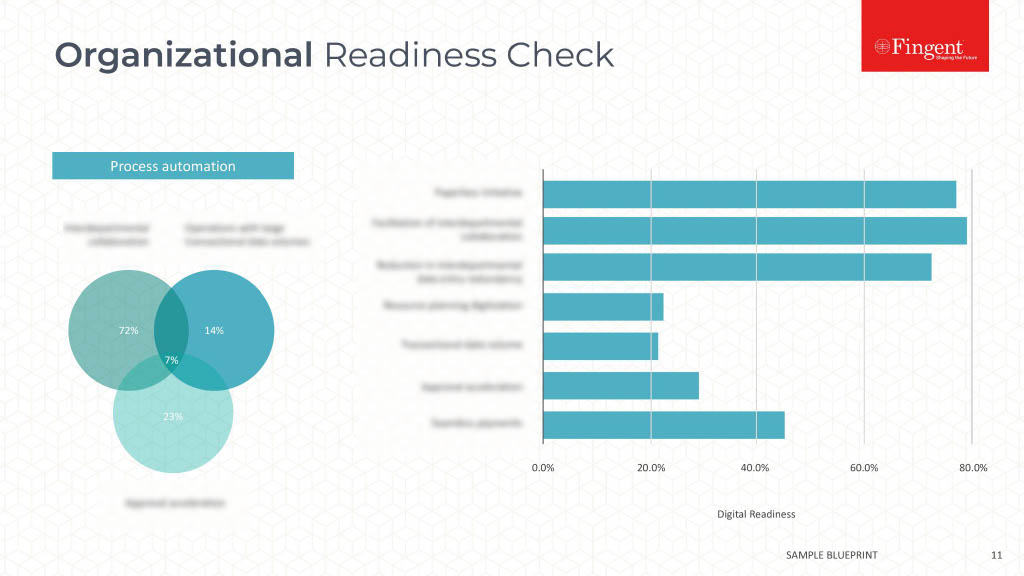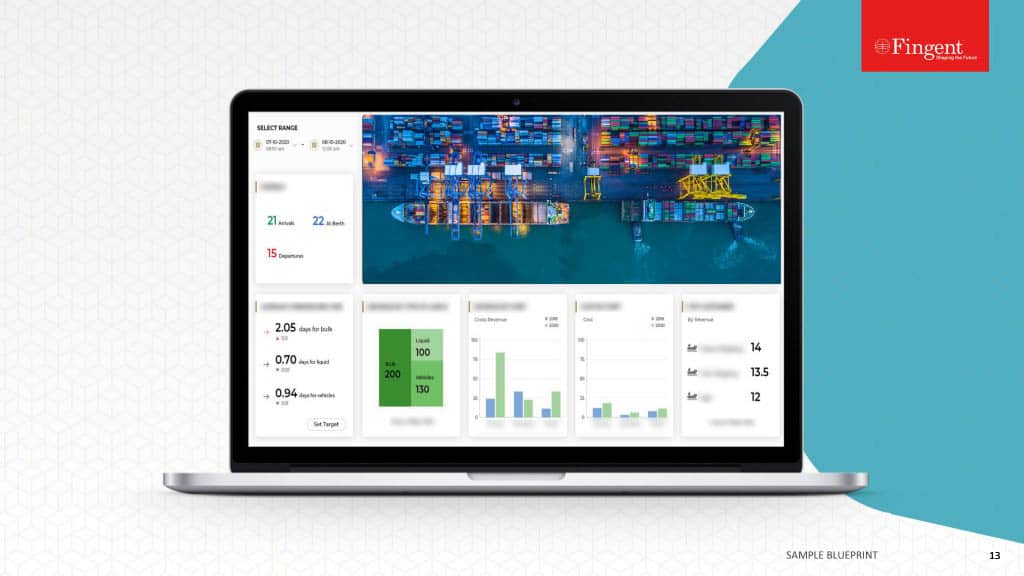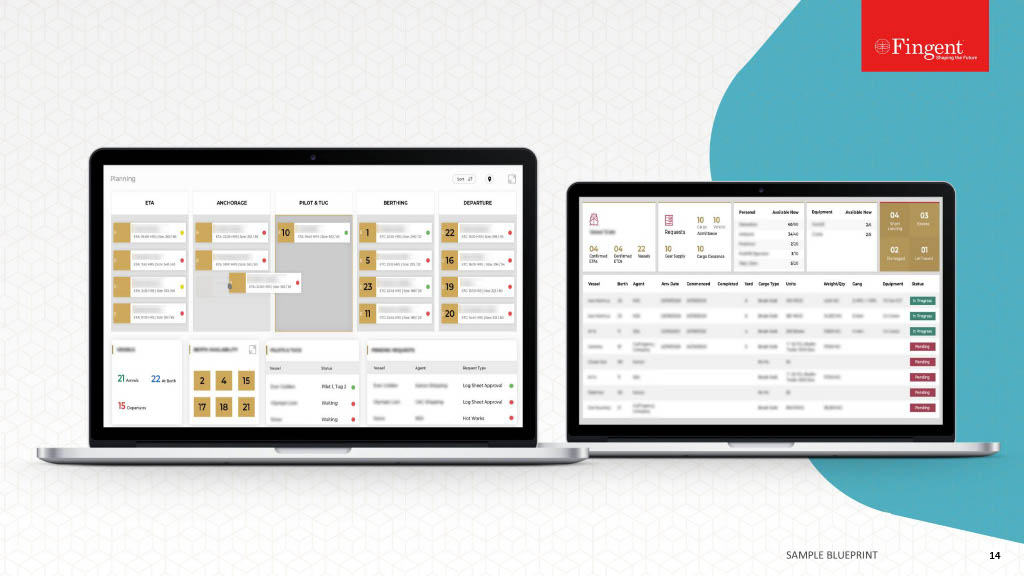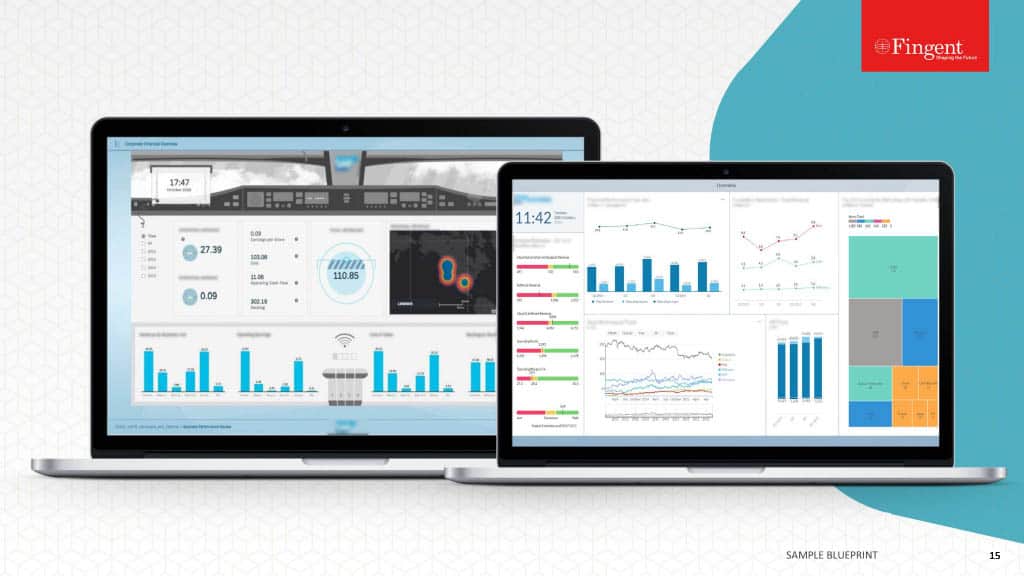Tag: AI
Artificial Intelligence (AI) is the rage now, but like all things tech, it is in a continuous state of evolution. Here is how Artificial Intelligence is expected to play out in 2024.
1. Complex AI-enabled chips in the Offing
The tremendous power of Artificial Intelligence, manifesting in the ability to undertake advanced mathematical calculations, number crunching, facial recognition, object detection, and other complex tasks, come with a hardware cost. Even the fastest and most advanced CPU is inadequate to improve the speed of training an AI model. Seamless execution of AI models requires additional hardware, in the form of specialized processors to complement the CPU.
Leading chip manufacturers such as AMD, Intel, NVIDIA, Qualcomm, and others, however, are working on removing the limitation, and are on the cusp of rolling out specialized chips that speed up the execution of AI-enabled applications. Hyperscale infrastructure companies such as Google, Amazon, Microsoft, and Facebook are also increasing investments in custom chip development. These new chips would be based on field programmable gate arrays (FPGA) and application specific integrated circuits (ASIC) and optimized for specific use cases and scenarios.
Needless to say, the new chips in the offing would make high-performance computing tasks such as query processing and predictive analytics very fast and seamless. Such chips would find application in a host of industries such as healthcare, automobile, and more.
Some of the early bird initiatives, such as Project Nitro from Amazon, Cloud TPUs from Google, Project Brainwave from Microsoft, Intel Myriad X VPU is a portent of the things to come in future.
2. Rise of ONNX to Facilitate Interoperability among Neural Networks
Developing workable AI based neural networks depends largely on selecting the right framework. While plenty of choices exist as to frameworks, developers are hamstrung by the lack of interoperability among such frameworks. This holds true for all the popular frameworks in vogue, including TensorFlow, Caffe2, Apache MXNet, PyTorch, Microsoft Cognitive Toolkit, and others.
Industry biggies such as AWS, Facebook and Microsoft are however are working on it, and have collaborated to build Open Neural Network Exchange (ONNX), which makes it possible to reuse trained neural network models across multiple frameworks.
ONNX is all set to become an essential technology for the industry in coming years, adopted by the stakeholders in a big way. Windows 10 ships already with ONNX runtime and Intel’s OpenVINO toolkit already supports ONNX, indicating the trend.
3. Automated Machine Learning to Gain Prominence
Machine Learning holds unbound promise but developing models is hard work, and the highly advanced expertise required stifles possibilities.
AutoML is however all set to change things. Applied the right way, it would empower business analysts and developers to evolve machine learning models capable of addressing complex scenarios without having to go through the usually arduous and vexatious process of training ML models, or going through elaborate workflows. Business analysts could focus on the business problem on hand, rather than worry about process and workflow.
AutoML offers the same level of flexibility that cognitive APIs perform, but also offer high portability and ability to co-opt custom data.
DataRobot, Google Cloud AutoML, Microsoft Custom Cognitive APIs, Custom Entities for Amazon Comprehend are some of the AutoML solutions already launched. The popularity of these tools indicates widespread popularity for AutoML in future.
4. Automation of DevOps through AIOps
AIOps represent the convergence of AI and DevOps. Such a convergence, which is all set to go mainstream, will benefit public cloud vendors and enterprises considerably.
Modern applications and infrastructure generate considerable log data, generated by hardware, server and application software, operating systems, and other sources. Such data finds a use for indexing, searching, and analytics, and is also aggregated and correlated to find insights and patterns. The application of machine learning models to such datasets makes IT operations proactive. Business managers and other stakeholders obtain insights in real time, allowing prompt and timely action. Enterprises could, for instance, leverage the improved and real-time intelligence to perform precise and accurate root cause analysis.
Some of the AIOps based tools already in vogue include Amazon EC2 Predictive Scaling, Amazon S3 Intelligent Tiering, Moogsoft AIOps, and Azure VM resiliency.
5. The rise of Virtual Agents
Businesses have started using Artificial Intelligence powered chatbots in increasing numbers. Chatbots answer questions, qualify sales leads and assist check out for online customers, among other applications. This year is likely to see an upgrade from chatbots to AI-powered virtual agents capable of handling even more complex customer service tasks, with even a face and personality of their own.
As a portent of things to come, Ava, Autodesk’s virtual agent, comes with a female face and a powerful persona that resonate the company’s brand image. Needless to say, such virtual agents are much more effective than human agents.
6. Increasing Role of Artificial Intelligence in Cyber Defense
Cybercrime has been a major issue for several years now. Cybercriminals target cloud infrastructure, IoT, and other cyber assets at will. Coming days will see an increasing application of Artificial Intelligence to fight cybercrime and keep cyber networks secure.
Artificial intelligence and machine learning are already applied to pick up subtle indicators of abnormal activities, detect online enemies in real time, and nip cyber threats in the bud.
7. AI to Power Smarter Retail Recommendations
The advancements in Artificial intelligence enable businesses and marketers to develop models that would recommend products based on not just the customer’s browsing history, but also the tone and sentiment. In future, companies will embrace AI-based solutions to offer their customers highly personalized shopping experiences. Such experiences would expand beyond e-commerce to brick and mortar stores as well, through digital interfaces.
It is interesting times ahead for AI. Smart enterprises would do well to tag tech companies who keep themselves abreast with the latest developments in this red-hot emerging technology and develop solutions to apply it to roll out workable solutions.
Related Reading : Unconventional Ways Artificial Intelligence Drives Business Value
Stay up to date on what's new

Featured Blogs
Stay up to date on
what's new



Talk To Our Experts
Artificial Intelligence is revolutionizing our lives. What used to conjure up images of robots taking over the world, is now a household word. Recommendation engines are reading our minds, virtual assistants are listening to our voices, and AI insights are transforming our businesses. AI is definitely here, and this blog will show you how.
Artificial Intelligence and Its Impact on Today’s World
Artificial Intelligence in its basic sense is defined as intelligence demonstrated by machines. In application, we can say that Artificial Intelligence is the ability of a machine to assimilate information and use it to make intelligent decisions. The attributes of problem-solving, decision making and other cognitive abilities that are associated with humans becomes artificial intelligence when applied to a machine.
The lifeblood of AI is data and its pulse run by an algorithm. Algorithms assimilate data and make sense of it through analysis. The resulting insight is what drives the decision making and problem-solving capabilities of Artificial Intelligence. Learning is by far the greatest attribute of Artificial Intelligence. The ability to learn and emulate human thinking and behavior is what makes AI nearly unstoppable. Its application in business is unmatched and is predicted to offer $15.7 trillion to the global economy by 2030!
Read more: AI Implementation For Businesses
Advanced Benefits of AI
The benefits of AI extend to much more than recommendation engines and chatbots. The ability of AI to make sense of data collected through the Internet of Things (IoT) will be a game changer in every aspect of our lives. Gartner predicts that 20.4 billion “things” will be connected by 2020. Artificial Intelligence can analyze the data collected by IoT technology and enable it in ways that we cannot even imagine.
A classic example of this is Idemandu, one of the most talked about topic in the AI world since the 2018 Consumer Electronics Show. In the words of its founder Pooya Abka, Idemandu is the first AI agent “that can understand customers’ service needs over voice, connect them to vetted service providers instantly, and learn about their personal preferences with time.”
Demonstrating what is possible with Idemandu, a Forbes article quotes this conversation:
You: “Hey Idemandu, could you ask my massage therapist to come to my place tonight preferably after 8? I’m feeling an annoying pain in my neck.”
Idemandu: “Sure, but your therapist is not available tonight. I found another very similar therapist who is available, would you like to see him at 8 pm tonight? If not, I can book your own therapist for tomorrow at 8:30 pm.”
You: “Okay, tell him to come tonight.”
Idemandu: “Okay, he’ll be there. I already briefed him about your pain.”
Imagine the possibilities with such an AI empowered assistant in every home and business. Google Duplex is another technology that is focused on helping us make hotel reservations. The Assistant will call your chosen restaurant, converse with the concierge, make a reservation for you, confirm with you if the reservation was successful or recommend another restaurant if it wasn’t!
The ability of AI and robotics to use concepts like AI-Augmented Contextual Analytics and Sentiment Analysis to better predict and direct customer experience was brought out in one of our recent blogs. You can read it here: https://www.fingent.com/blog/how-robotics-and-ai-can-improve-customer-experience-ctos-guide
How AI Is Transforming Various Business Sectors
The biggest impact of AI in business development. A survey conducted at the EmTech Digital conference revealed that respondents saw AI affecting these top three business outcomes:
- improve and/or develop new products and services
- achieve cost efficiencies and streamline business operations
- accelerate decision-making
We can see this impact in nearly every sector in business. Here are three sectors where the impact of AI has been seen the most:
Healthcare
86% of healthcare provider organizations, life science companies, and health technology vendors are using AI technology, says a 2016 report from CB Insights. These organizations are projected to spend an average of $54 million on AI projects by 2020. Few areas where AI is being used in healthcare are:
1) Data management – Medical records and other patient data can be accurately analyzed, stored and used to provide healthcare businesses with the right information at the right time. Time-intensive report analyses can be automated, diagnosis can be fast-tracked, and treatment can be better administered.
2) Virtual Consultation and Care – Healthcare apps using AI allow doctors, patients and, caregivers to communicate and coordinate effectively. Speech recognition, machine perception, and other AI enabled technologies, help to monitor the patient’s condition and administer effective treatment.
3) Precision Medicine and Drug Discovery – By screening complex compounds and existing medicines for specific attributes, drug candidates for pre-clinical drug discovery and development can be rapidly identified. AI can also help detect diseases and predict hereditary health issues more accurately and help design precision medicines for specific genetic make-ups.
For more applications of AI in the healthcare industry: https://www.fingent.com/blog/5-ways-big-data-is-changing-the-healthcare-industry
Finance
The assimilation and analysis of financial data is where AI shows its true potential, but there is much more that AI can do in the financial sector. AI in the Finance industry reduces costs, saves time and improves accuracy and efficiency in all areas of Finance. Here are a few applications:
- Security from Fraud – Security is the number one concern in the financial sector. AI helps in this by simulating fraud and cybercrime scenarios and coming up with preemptive security measures to combat security breaches. AI also helps in monitoring whether all security measures and regulations are being followed in the design of financial technology.
- Wealth Management – AI engines help analyze data associated with wealth management and provide insights on how to provide optimal benefits to clients. Creating personalized and tax-optimized investment offerings for clients becomes much simpler and accurate with the help of AI. AI also helps mitigate the unpredictability of the stock market, by incorporating features like blockchains and distributed ledgers.
- Digital Assistants – AI now assists with banking transactions and finance in nearly every household. AI assistants like Alexa, Siri and others are used to make financial transactions. Voice assisted banking is being made possible with banks like Barclays coming up with technology to enable money transfer through voice assistance software.
Read more about how predictive algorithms and AI will rule financial services: https://www.fingent.com/blog/how-predictive-algorithms-and-ai-will-rule-financial-services
Transportation
AI is being used widely in the transportation sector and these are a few areas where it is making an impact:
- Automation – While driverless cars are what comes to mind when we talk about AI and automation, the role of AI in automobile manufacturing is of equal import. Tesla’s automated manufacturing systems in its factories is an excellent example of the capabilities of AI in automobile manufacturing.
- Cloud based conveniences – With the help of AI and cloud computing, automobiles are being packed with features like suggestions for gas stations when the fuel is low, favorite restaurants on the route and shopping reminders when approaching stores.
- Intelligent Maintenance – Features like predictive maintenance, repair scheduling, and even sensors to detect medical emergencies for drivers can be enabled with AI.
Read more about how connected transportation will disrupt the world: https://www.fingent.com/blog/how-connected-transportation-will-disrupt-the-world
Keeping up with AI
As you can see, the implications for AI in business is tremendous. It is important that businesses capitalize on AI-based technologies to keep up with the competition. Fingent has helped businesses from every sector to implement AI and drive revenue. Drop us a message if you have any questions!
Stay up to date on what's new

Featured Blogs
Stay up to date on
what's new



Talk To Our Experts
Today’s consumers are tech-savvy, demand consistency and know they can switch brands at any time. Therefore, Customer Experience (CX) is extremely important now more than ever. Customers aren’t just buying a product. They are looking to gain a good experience throughout the customer journey – before, during and after their purchase.
Imagine the pressure of not slipping up in any instance! If it wasn’t for AI and robotics, this could be a daunting affair. Thankfully though, the application of robotics and AI has streamlined the entire customer journey. As a CTO, leading the company towards this technological transformation is a great responsibility. This blog will take you through 4 ways in which robotics and AI can improve customer experience.
1. Personalization
Hyperconnected customers of this digital age highly value personalization. This personalization is expected at all touch points and marketers are employing various strategies to achieve this. In the basic sense, this includes presenting personalized recommendations using algorithms and predictive analytics. Algorithms mine transaction data, browsing patterns and purchasing behaviors to gain customer insight. This information then enables to design personalized offers and create cross-sell opportunities.
Machine Learning is going one step further with AI-Augmented Contextual Analytics. Contextual Awareness is made available through machine learning and human curation. This awareness is implemented across the entire data and analytics workflow of the company. Thus, personalization is made possible throughout the operations and can be implemented at any touch point.
Sentiment Analysis is the next big thing that companies are implementing in order to improve customer experience. Voice, text and visual engagement can be analyzed by technologies to gauge sentiment and emotion. Voice biometrics over phone calls, parsing of facial expressions during video chats, and texts through chatbots can be used to understand emotion and intent. This insight helps companies measure and deliver customer satisfaction more effectively.
Read More: Predictive Analytics: The Key to Effective Marketing and Personalization
2. Improving Internal Processes
As we have discussed, customers expect a satisfactory experience in all touch points. This includes the way the company is run, the backend and the corporate image. Efficient processes and effective decision-making filters down to a profitable company and happy customers. AI and robotics can be used to achieve this.
Mark Robinson, co-founder of the world leading SaaS solution Kimble talks about how augmented intelligence helps businesses grow. “Using augmented intelligence to make suggestions to staff, and to record their response, means that humans and the machines can work together to come up with the best solutions,” he says. “There is less need to worry that people are going to miss important actions or take wrong decisions because of the visibility of what’s going on.”
It is believed that AI has the power to increase productivity by 40% or more by 2035. By automating processes and supporting innovation, AI can improve manufacturing and business processes. One example is smart product ordering systems, which use the power of AI to streamline order fulfillment. Our recent blog brought out the opportunities in this: “From ensuring that the product is personalized and available where the customer wants it, to streamlining the order shipment and delivery process, the customer experience is enhanced by the intelligent product ordering system.”
3. Effective Pricing
“What I ‘charge’ today has nothing to do with yesterday or tomorrow. It has to do with ‘now’!”
– David Wayne Wilson
This has profound significance today, where pricing drops or increases by the second. However great your marketing, your technology and other systems are, it all comes down to pricing. If a consumer gets the same benefits and quality at a lesser cost, he will opt for a cheaper option. Pricing is therefore a vital component in competitive advantage. This means that businesses must keep a close eye on competitors’ pricing behavior.
That is where Dynamic Pricing Science holds significance. With the power of Artificial Intelligence, cognitive algorithms, big data and machine learning, businesses can now effectively adjust their pricing strategies in real-time. Dynamic Pricing Science enables tailor-made pricing solutions to customers at the right time and consistent across channels. It helps understand buying patterns, identify effective correlations, compare competitor prices, match it across channels and create a customized offer – all in real time.
4. Improving Response Time
Response time is crucial in business. This is true in leads conversion as well as customer service. The importance of response time in lead conversion was brought out by Dave Elkington, the CEO and founder of InsideSales.com. Quoting a study he was involved in he says: “The study revealed that the odds of making contact with a new lead are extremely high if you call within the first 5 minutes of submission … a rep is 100x less likely to make contact if the first call is made 30 minutes after submission. The odds of making contact drop by 3000x if the first call is made 5 hours after lead submission.” Converting a lead into a customer is the first customer touch point and it is vital to get it right.
This is important in customer service as well. The State of Multichannel Customer Service report found that:
- 68% of people stop doing business with a brand due to a poor customer service experience.
- 34% of people feel that quick resolution of their problems was the most important feature of customer service.
- 61% of people on social media expect a response from a brand in less than 24 hours.
A bad response time could break a business as the numbers show. However, AI and machine learning have helped immensely in this regard. Chatbots are proving to be a great boon, especially when it comes to swift response on first-level queries. This ensures that there is an immediate response and minimizes time spent by personnel on repetitive queries. Agents can then handle deeper conversations and conversions with the assistance of AI.
China Merchants Bank is an excellent case study on the effectiveness of real-time chatbot interaction. Interactions through these bots had reached a record of 41 million by the end of 2015, with the chatbot handling 99.5% of the questions with an accuracy of 99.8%!
Power Your Customer Service With AI
As you can see, the power of AI and robotics in customer service cannot be overemphasized. Fingent works with clients across industries all over the globe. We would be happy to help you with any questions you might have. Drop us a message and let’s get this rolling.
Stay up to date on what's new

Featured Blogs
Stay up to date on
what's new



Talk To Our Experts
Artificial Intelligence (AI) is the simulation of human intelligence processes with the aid of machines. These machines primarily include computer systems and tools that carry out learning, problem-solving, reasoning and perception.
Customer service is one area where AI tools and technology can be used efficiently. As per a recent study, it is estimated that nearly 85% of the customer interactions will be handled without the presence of a human agent in next three years. There are approximately 38% of the enterprises that are using AI and the number will grow to 62% by the end of 2018. AI has the capability to accomplish the following set of tasks and activities in customer service and interactions.
Pre-emptive Action
AI embedded monitors can provide the customer service team with the ability to analyze the primary customer issues. The systems can offer real-time support to the customer for the resolution of such issues. The huge clusters of web applications can be gathered and studied to resolve the issues even before their occurrence. This empowers the business organizations to reduce the customer abandonment rates and enhance the level of customer engagement.
Messaging Applications
The use of messaging applications is not restricted to connecting with friends, family, and colleagues. The brands are using these applications for customer interaction and the usage is set to increase further. The use of social media applications and in-house messaging applications allows real-time interaction with the customers and thus resolve their queries and issues.
One-time Training
The expenditure on hiring the customer service agent and training the member is quite high. It is also necessary to organize training sessions at regular intervals. However, with the use of AI platforms, a one-time training is sufficient which in turn would bring down the costs to a huge margin.
Related Webinar : Artificial Intelligence in layman’s termsNon-stop Services
Customer service agents cannot be made available for a non-stop period of time. The human resources work for specific hours in a day and may remain unavailable at the time of an incident. These limitations can be resolved by the use of automated support and customer service tools which interact with the customers at any hour of the day. The queries and incidents reported by the customers are automatically recorded and a suitable response is also provided that matches the reported query.
Self-service Options
A recent customer service study revealed that over 72% customers do not prefer phone calls for the resolution of their query or issue. Self-service options for customer service are on a rise and the use of chat-bots and forums have rapidly increased. AI has enabled the easy development and usage of such options. The companies that are still not utilizing such platforms will be required to incorporate the same in the future for enhanced customer relationship management and service.
Reliability & Scalability
Customer service and interaction have a great role to play in customer engagement and relationship management. According to a survey, 42% of the customers increased their purchase after a good customer service response. On the other hand, 52% customers reduced their engagement with the organization after a poor experience. AI platforms can enhance the reliability of service with their non-stop availability and unbiased customer interaction. The AI tools can also be scaled up or down as per the requirements. These applications can simultaneously handle a wide number of customers without any impact on the speed and performance.
Cost-Savings
There are advanced customer services that can be provided by artificial intelligence. The use of automated applications can reduce the costs. Resource and training costs along with the cost of the infrastructure are eliminated with the incorporation of AI tools.
It is often assumed that Artificial Intelligence will replace the jobs currently being handled by the human resources. There are over 10 million jobs that will be replaced by AI tools and applications in next ten years. However, in the case of customer service, automated assistance can only resolve 10-35% of the customer queries. Human assistance and capabilities will be required in the rest of the cases. The business organizations must research the AI applications and platforms that can be incorporated into their customer service interactions.
Stay up to date on what's new

Featured Blogs
Stay up to date on
what's new



Talk To Our Experts
The past decade has been a game-changer for the way businesses operate in the realm of retail. The advent of e-commerce and its subsequent boom has compelled brick and mortar outlets to undertake a paradigm shift from a profits-first to a consumer-centric approach. Failure in conforming to new consumer demands fueled the retail apocalypse that toppled the brick and mortar landscape. Thus, we see retail giants like Bon-Ton Stores Inc., Sears and Macy’s filing for bankruptcy and liquidate their holdings.
Implementation of targeted mobile promotions, loyalty benefits, e-payment gateways is just some of the strategies adopted by retail outlets to maintain a competitive advantage in the face of fierce technological overhauls. With disruptive innovation gaining a strong footing now more than ever, the need to constantly reinvent and augment is more pressing than before. Here are five key disruptive technology trends that you need to sync your business model with, to offer consumers retail experience par excellence:
Related Reading: 5 Ways to Enrich Customer Experience at Your Retail Store
1. The advent of Artificial Intelligence
Robots and AI bots capable of not just learning but also executing real smartness are the new focus in tech innovations. Retail giants are already experimenting with ways to implement these AI bots in their business operations. A strong case in point would be Amazon’s no-checkout cashier-less convenience stores, Amazon Go being tested across different states in North America.
Then there are self-driving grocery stores and automated trucks making home deliveries that are still undergoing trials. Of course, that is not to say that AI dominating retail operations will become the new normal tomorrow, but it is in the offing. Businesses that are in the retail sector for the long haul will stand to gain from their preparedness to embrace this change.
2. The Internet of Things
The ability of devices to interact with humans, understand commands and execute them is passé. The Internet of Things (IoT) puts the limelight on the ability of machines to interact with one another. The slow but consistent development of IoT is shaping up a new ecosystem where our gadgets will be able to operate without human intervention. Besides, the global market size for IoT in retail is expected to grow around 94.44 billion by 2025.
The emergence of IoT will inevitably alter the dynamics of the way consumers interact with retail business and the way businesses interact with distribution networks and supply chain partners. More importantly, it will usher in a connected customer model by relying on smart-store applications like smart shelves, beacons, and customer service robots. Making room for these swift connections powered by the internet will help you build a business model that is future ready.
3. Striking the Online-Offline Balance
It is the age of digital customers where the lines between online and offline existences are forever blurring. Brick and mortar businesses need an online extension to sustain themselves. Now, the spotlight is on understanding the dynamics of virtual and augmented reality and creating a marketing strategy that caters to the customers’ dual persona – considering their social media image and real identity – to encourage continued interactions and conversions.
The result – a complete overhaul of the shopping experience by bringing in a consistent omnichannel approach built around a convenient digital backend. For instance, Oasis, the UK-based fashion retailer is closing the gap between in-store and online purchasing by merging shopping experiences across its mobile app, website, and brick-and-mortar stores.
4. Personalized Shopping Experience
Take a look at how e-commerce websites function – bringing customers exactly what they need, every time, on every device, without fail. This carefully curated shopping experience eliminates the need for buyers to browse through the inventory of online stores to find what they need. Over time, this approach toward shopping has been normalized to an extent that customers expect the same out of their retail shopping experience too. Installing smart screens, tablets etc. is one way of using technology to recreate the same sense of personalization in your retail business.
5. Banking on Data
Big data is the next big thing in terms of business operations. Multinational corporations are pumping in billions of dollars to assimilate and organize this seamless information to create the right kind of marketing strategies. While big data may be out of your reach as a standalone business entity, you can create your own pool of data and use it to offer improved retail experiences for your customers.
Fun quizzes, for instances, are a great way to gather insights into your customers’ buying preferences, which can then be used to offer personalized product recommendations. You can take it a step further by tracking these recommendations to know if they are appealing to your customers and tweak them accordingly.
Related Reading: How Big Data and Analytics are Evolving Customer Experience in Retail
[Courtesy : European Bank for Reconstruction and Development]
Meanwhile, other technologies like virtual and augmented reality will continue to grow in popularity and efficiency. As a retailer, the onus of using these disruptive innovations to offer a seamless customer experience falls on you. Pairing with the right technology partner is the first step. Get in touch with our experts today to uplift your retail experience with cutting-edge software solutions.
Stay up to date on what's new

Featured Blogs
Stay up to date on
what's new



Talk To Our Experts
Artificial Intelligence (AI), the next big thing in the technology space, is all set to unleash big scale disruptions. The potential impact is more profound in the financial sector, which lives and breathes data.
Artificial Intelligence (AI) powered “smart” machines do not just crunch data. It indulges in self-learning to solve cognitive tasks, until now the forte of the human brain. A traditional analytical engine or software robot requires someone to feed in clear set of rules set in advance. AI-endowed self-learning machines create the rules and frame the logic by itself, as it crunches through millions and millions of rows of historic data, identifying. It learns to perform the required task based on the decisions humans have made previously. AI powered algorithms also learn from mistakes, meaning the predictive analytics in spews becomes more and more accurate with every recorded transaction.
In the financial sector, such AI-powered systems delve into many years of banking, insurance, mortgages and financial trading history, apply deep learning principles, and self-construct algorithms to automate routine tasks, unlocks insights, improve decisions, mitigate risk, and prevent frauds. AI’s natural language processing system can read through regulations, reassembling words into a set of computer-understandable rules.
The CBInsights Conference on the Future of Fintech predicts a rapid pace of disruption in the financial sector, requiring incumbent stakeholders to adapt or risk being submerged in the coming tidal wave of predictive analytics. Apart from conventional tools, Artificial Intelligence-inspired technologies such as blockchains, insurance tech, robo-advising, and other latest cutting-edge innovative tools promise to take analytics to a whole new level.
The following are the potential applications of Artificial Intelligence, which would take over financial services in the near future:
- Improved efficiency through greater automation and better insights
- New models for several traditional functions, especially in stock analysis and wealth management advisory services
- Customization and personalization of financial products, leveraging the services of analytics-driven recommendation engines;
- Improved cyber-security monitoring and responsive systems, and automated fraud detection
Improved Efficiency
AI and robotics powered automated solutions are on the verge of subverting the traditional business models of banks and other financial institutions.
AI-based algorithms automate much of the routine tasks that require extensive workforce now, leading to considerable savings on overheads, accelerated processes, and overall improved efficiency. Being lean and mean is the mantra for success in today’s highly competitive environment, and AI will help financial institutions discover new meaning to lean and mean.
AI-based technology simplifies and automates a host of routine tasks related to money management processes, such as identity authentication, know-your-customer checks, sanctions list monitoring, billing fraud oversight, anti-money laundering monitoring, risk control processes, and more.
AI facilitates several tasks, such as bot messaging, document discovery and more which require extensive manual work now.
Such efficiency improvement interventions have the potential to offer huge ROI for the financial service industry. Banks adopting ROI already report about 40% increase in productivity.
New Trading Models
AI powered predictive analysis has the potential to create entirely new business models in equity, forex and other trades.
Algorithms are already in widespread use to manage risk and exposure. With AI getting better, the scope of intervention will change from refining existing models to becoming the bedrock of newer innovative models. AI-powered algorithms offer brokers and investors access to charts and trends at a much more sophisticated level than before, enabling them to chase short-lived opportunities cutting across venues, asset classes, and geographies. Trading algorithms assess the best liquidity providers during execution. The possibilities are endless.
Thomson Reuters predict algorithmic trading systems to handle 75% of the global trade volumes in the near future. Almost all hedge fund in the world already have a huge data-science team, and deploy sophisticated filters to screen investment ideas.
Tightening regulation mandating extensive record keeping and tracking of all trades, and the need for increased speed in correlating multiple variables, to keep pace with a fast paced and highly competitive environment plays into the eventual dominance of AI.
Deep Personalization and Customization
One of the innovative possibilities with AI in the financial sector is in the realm of marketing. Already, marketers are analyzing behavioral data captured from online activities in a big way, to customize and personalize offerings based on spending habits, social-demographic trends, location, and other preferences.
With AI capable of understanding human language and emotion, marketers of financial products and services would soon take personalization to a whole new level. For instance, AI-powered marketing database could suggest language that elicits certain emotional responses to advertising and email subject lines, and trigger cultural sensitivities to certain words and timing of campaigns. Biggies such as Citi and AmEx already use such tools to good effect, to fine tune their social media and marketing engagement.
Security and Fraud Prevention
Cyber-attacks have brought down many high-profile financial institutions, and continue to be a nightmare for the industry stakeholders. AI promises a fresh breath of hope.
For instance,
- AI based analytic engine capture multivariate time series patterns, to predict anomalies.
- AI based predictive analytics make explicit customer behavior, to flag potential fraud or breach in real-time
- AI can easily correlate and link multivariate transaction data, facilitating easy recovery of layers of bank documentation and data to meet regulatory policies, and establish a money trail to bust financial frauds.
- Sophisticated machine learning and algorithm that monitor market movements in real time allow regulators to prevent major accidental market movements.
Regulations influencing financial markets, such as the European Union Markets in Financial Instruments Directive II (MiFID II) push for greater automation of trades, further boost the prospects of AI in the niche.
Experts estimate AI to surpass human intelligence by 2040. However, the financial services sector need not wait that long for predictive analysis to take over and relegate human brains to a role of supporting AI functions. It nevertheless takes great skill in developing actionable apps and products that leverage AI to unlock the many possibilities on offer. Your best bet is to partner with us and leverage our highly talented and experienced skill set for the task. We are in the thick of AI inspired things, having access to the latest technology and developments, and offer you the unique value proposition of technical competency with a considerable track record in every industry to understand your specific needs and develop highly customized products.
Stay up to date on what's new

Featured Blogs
Stay up to date on
what's new
















